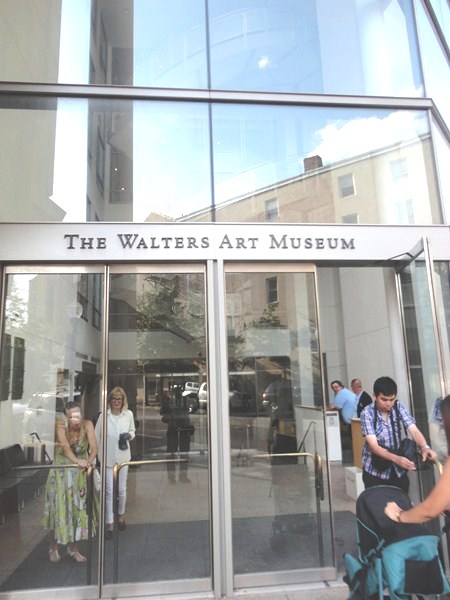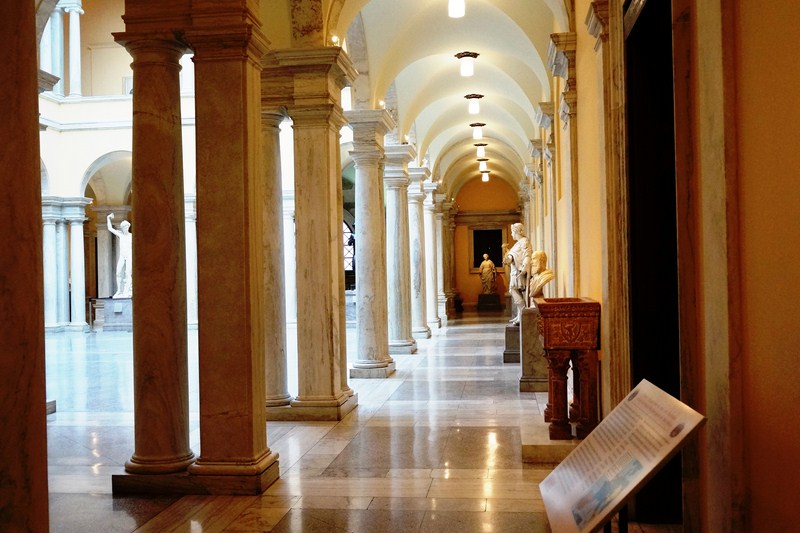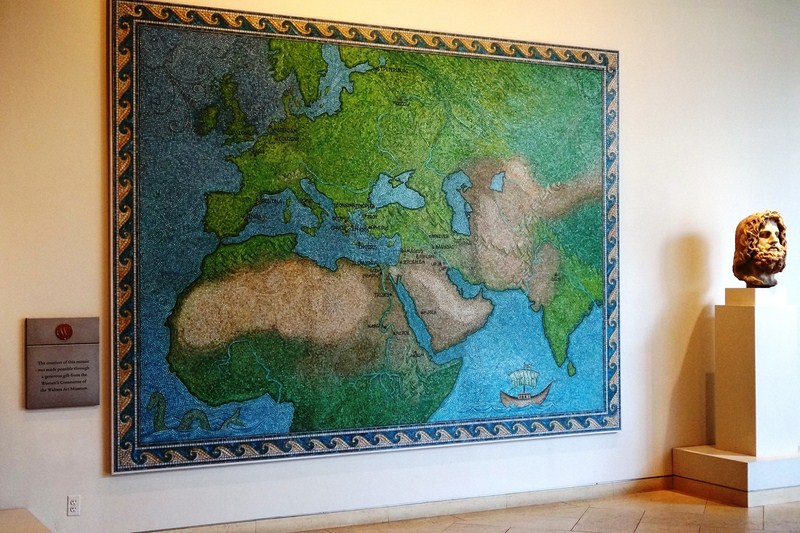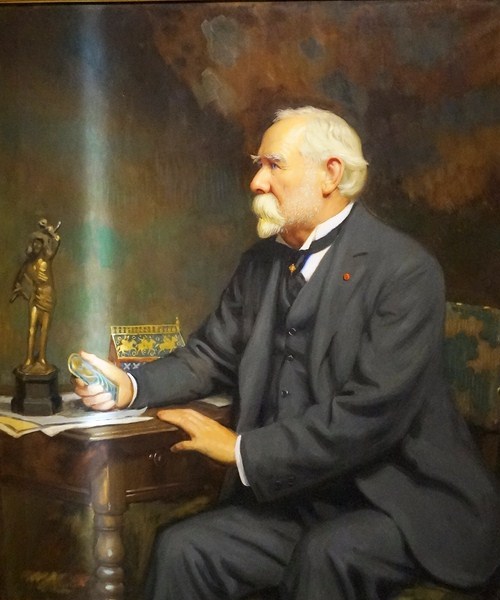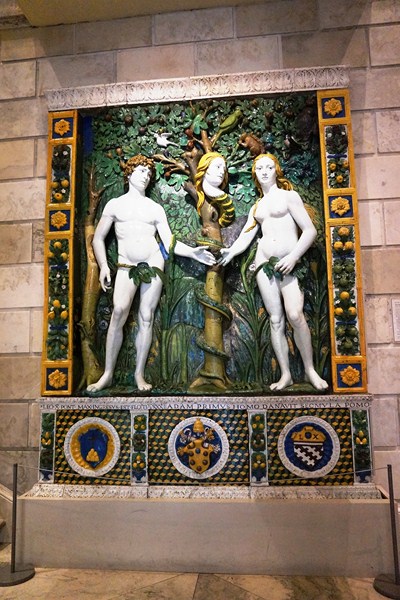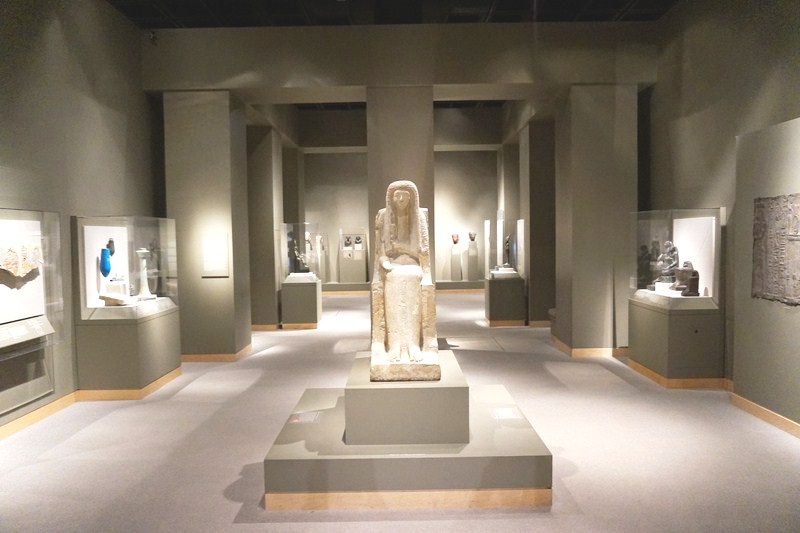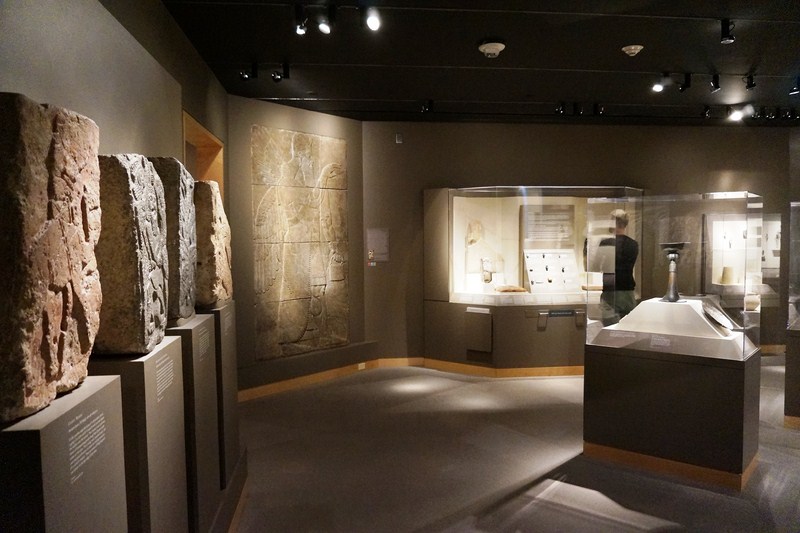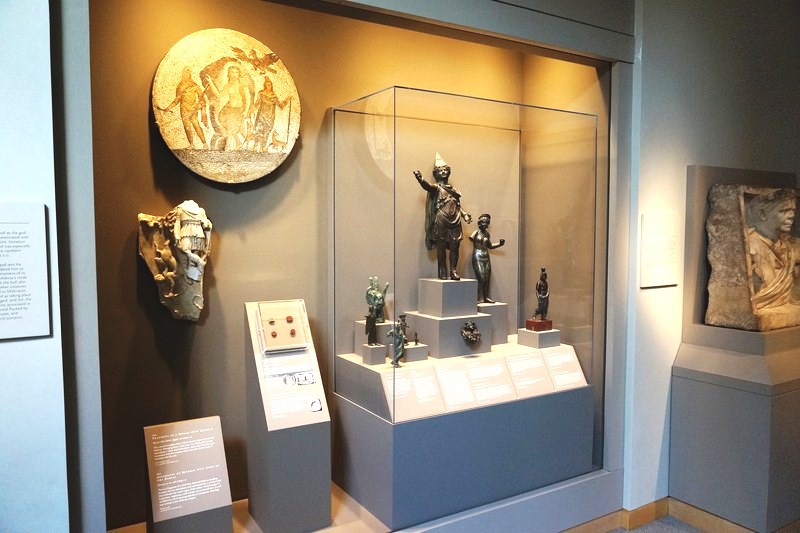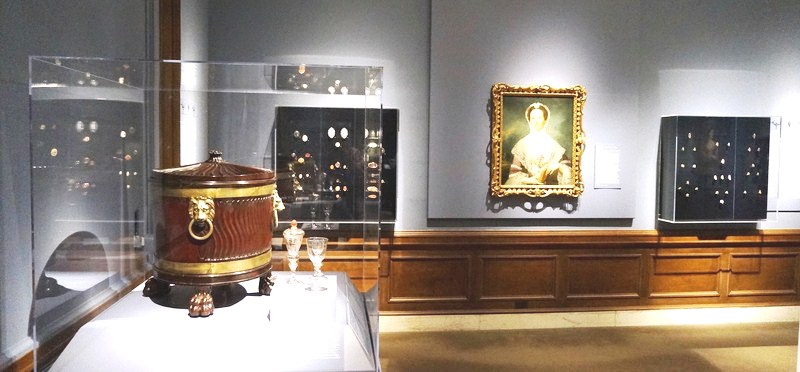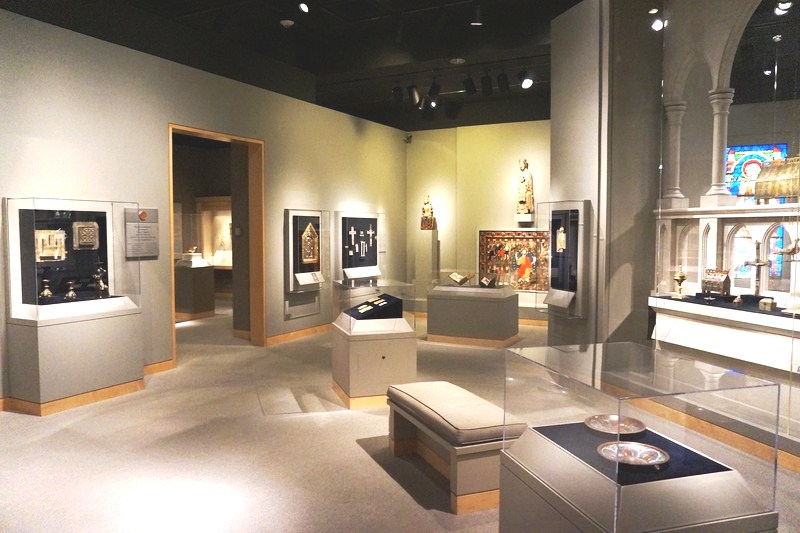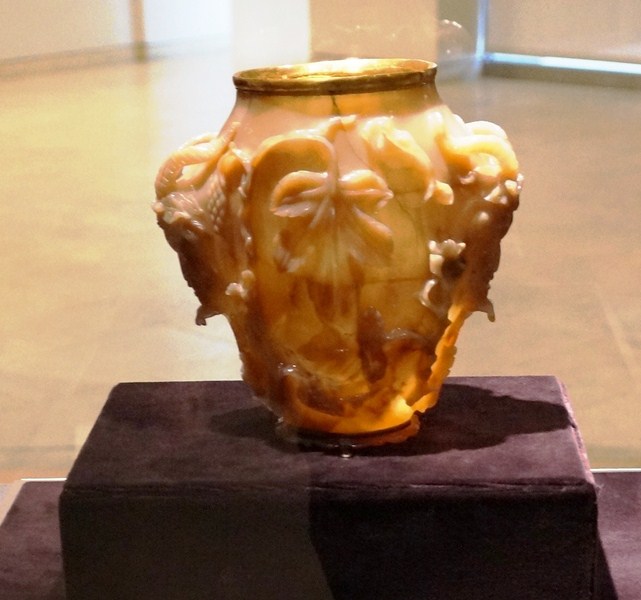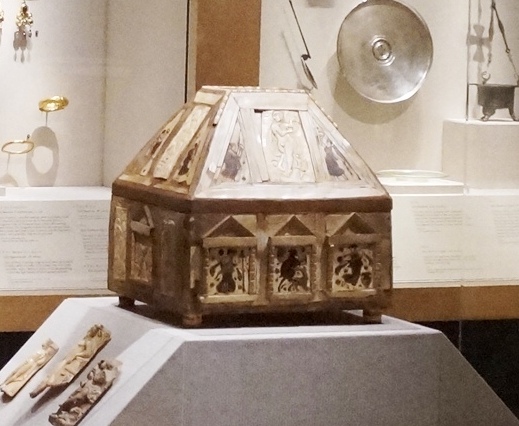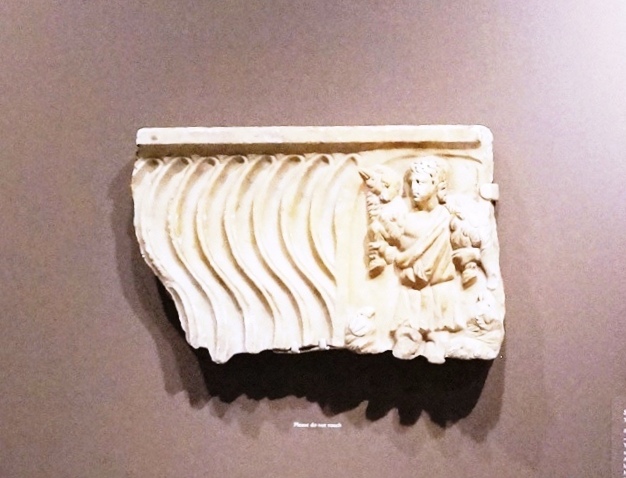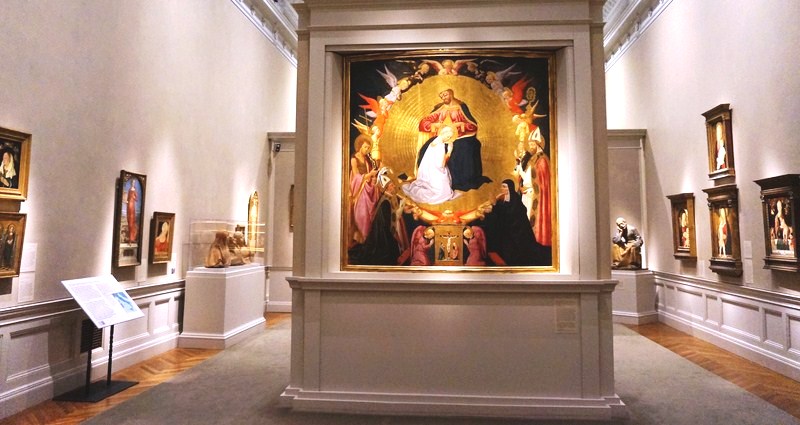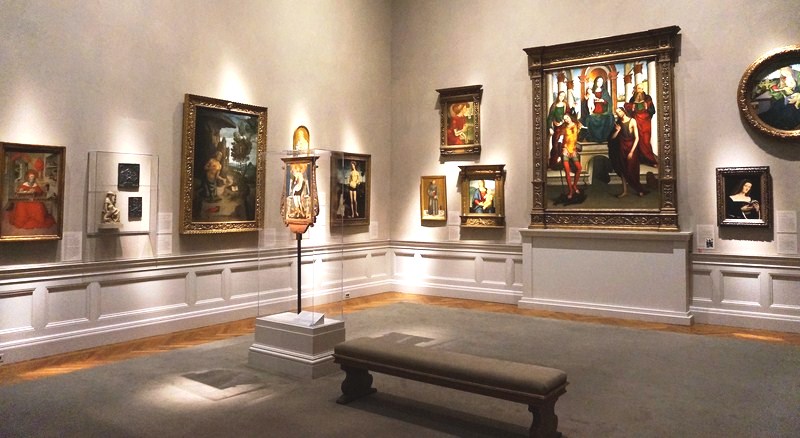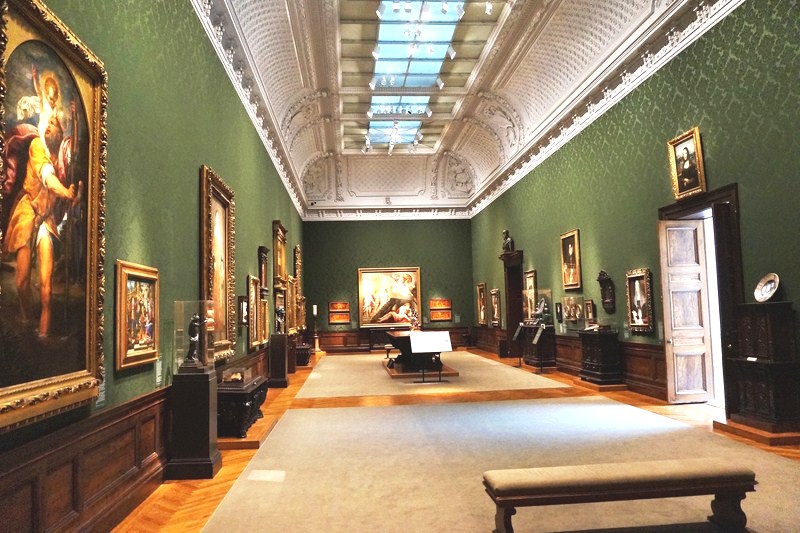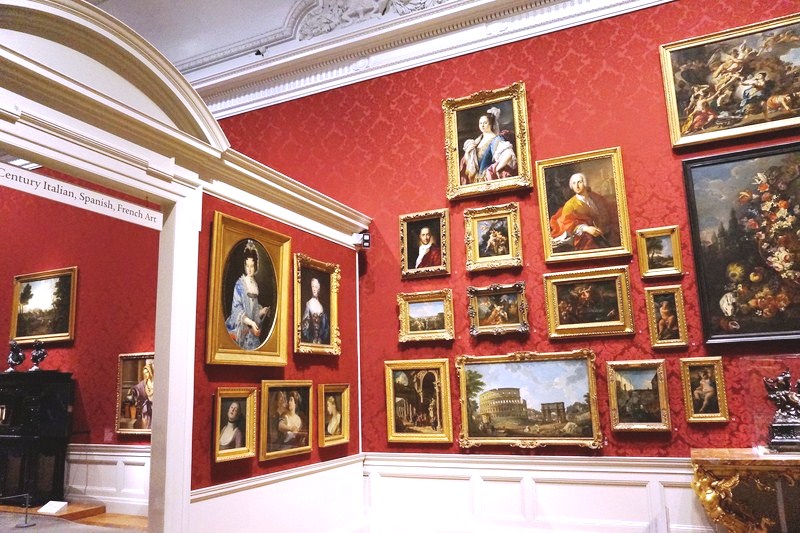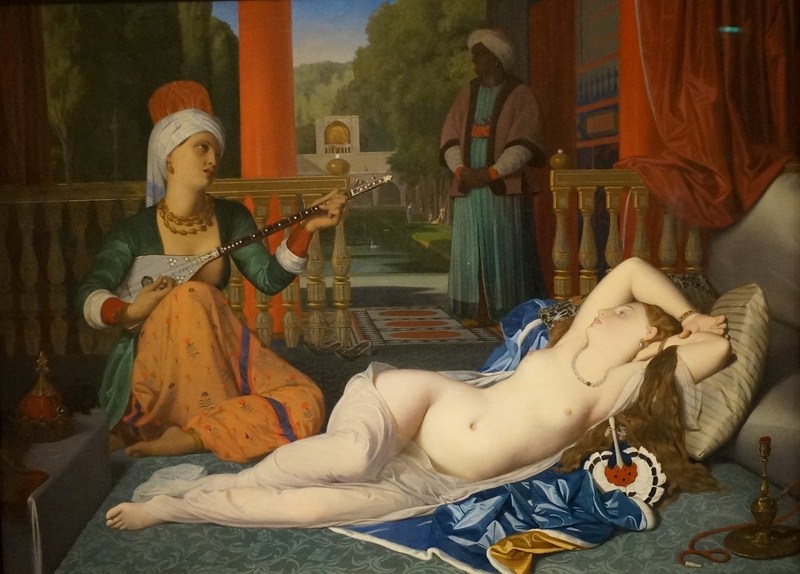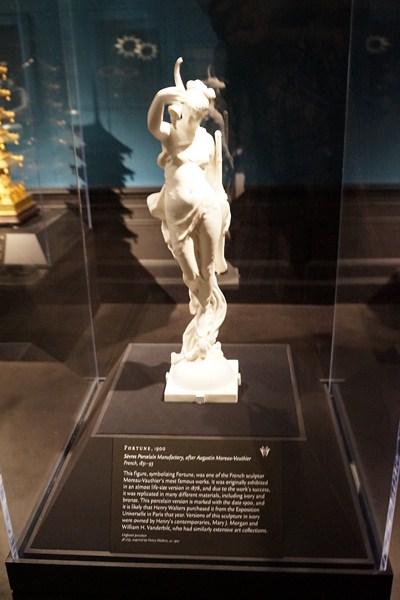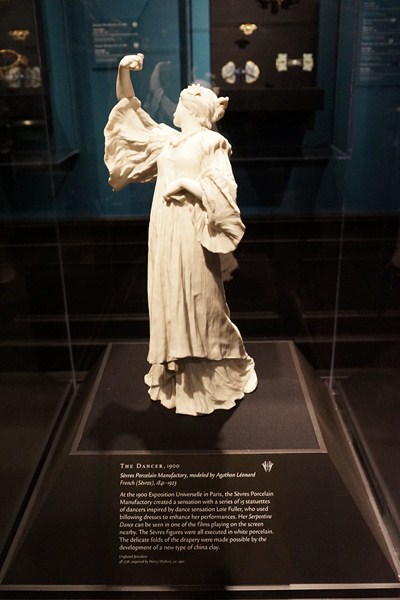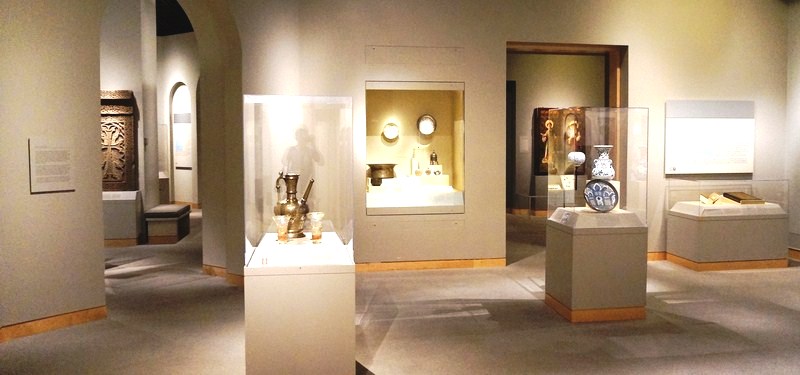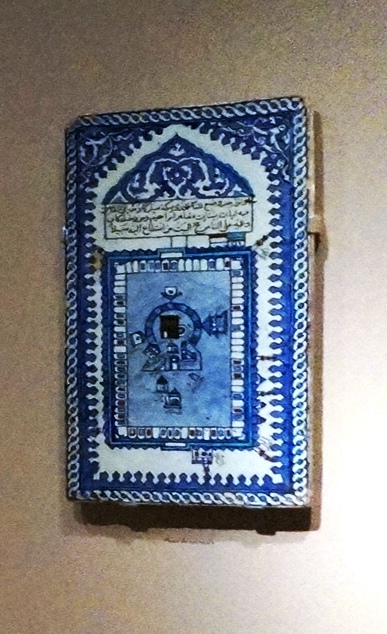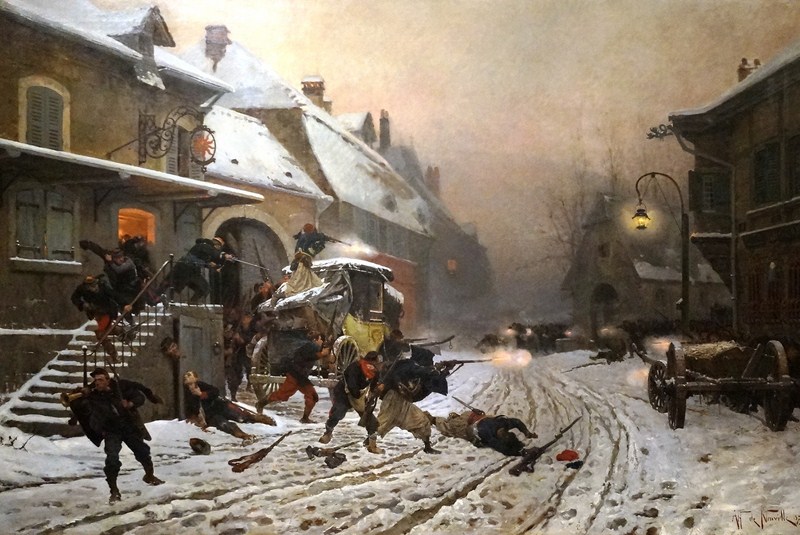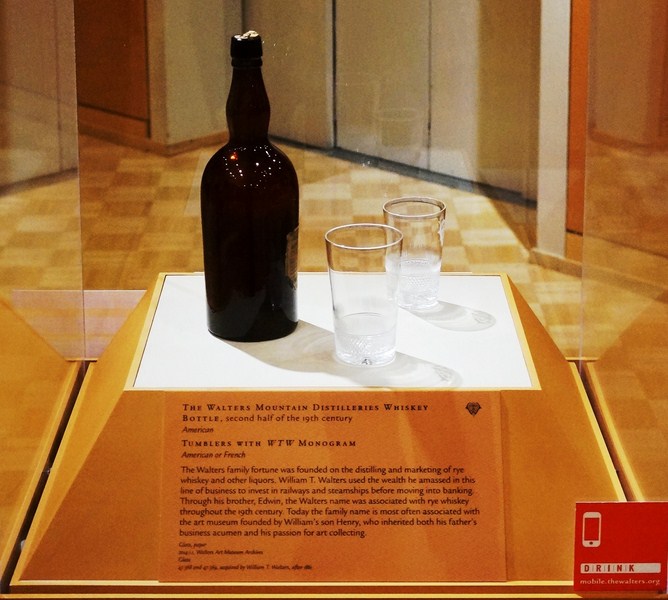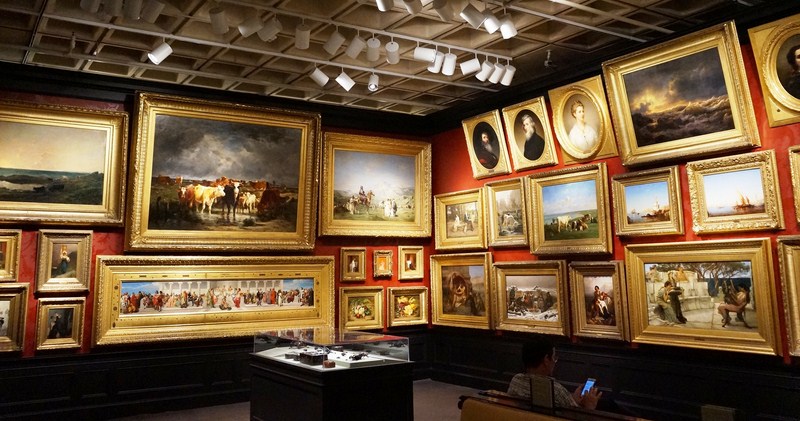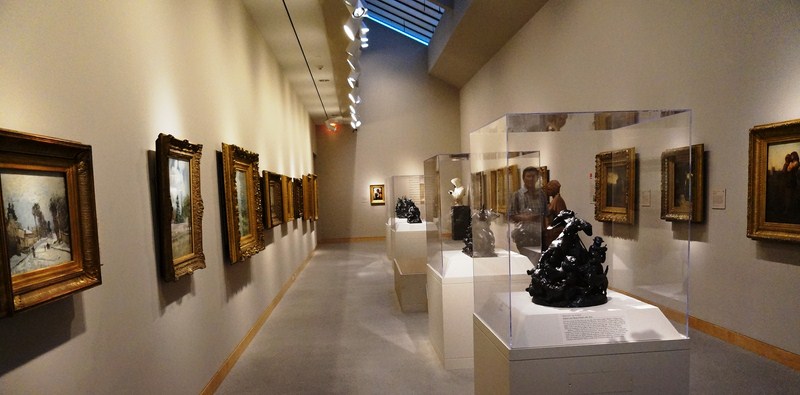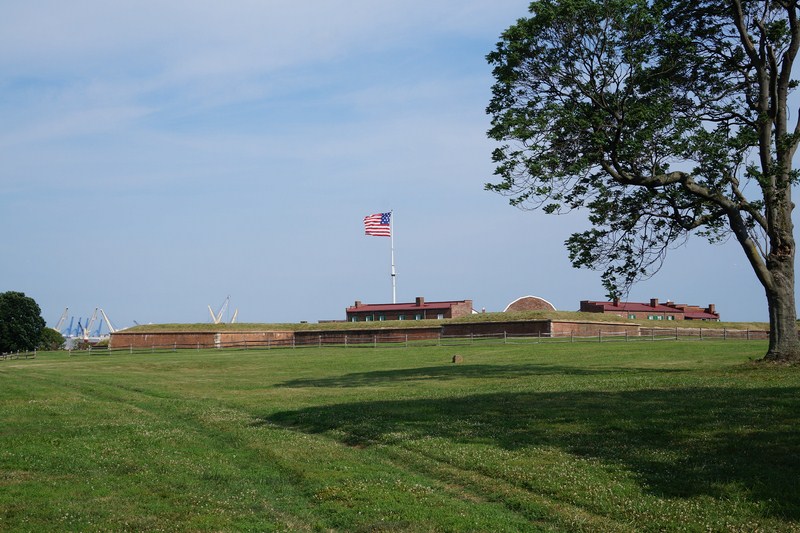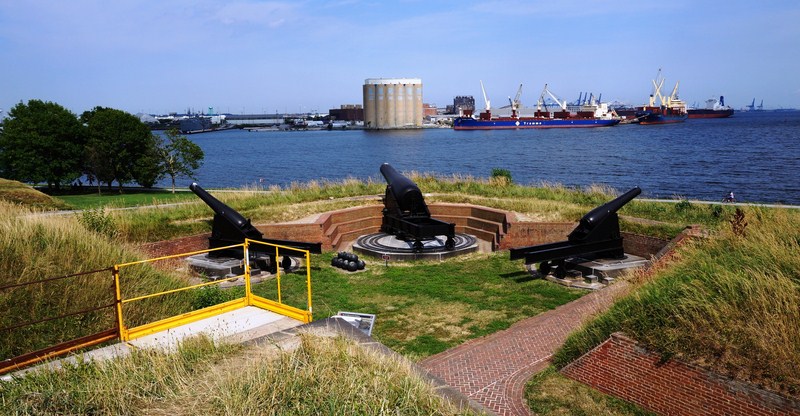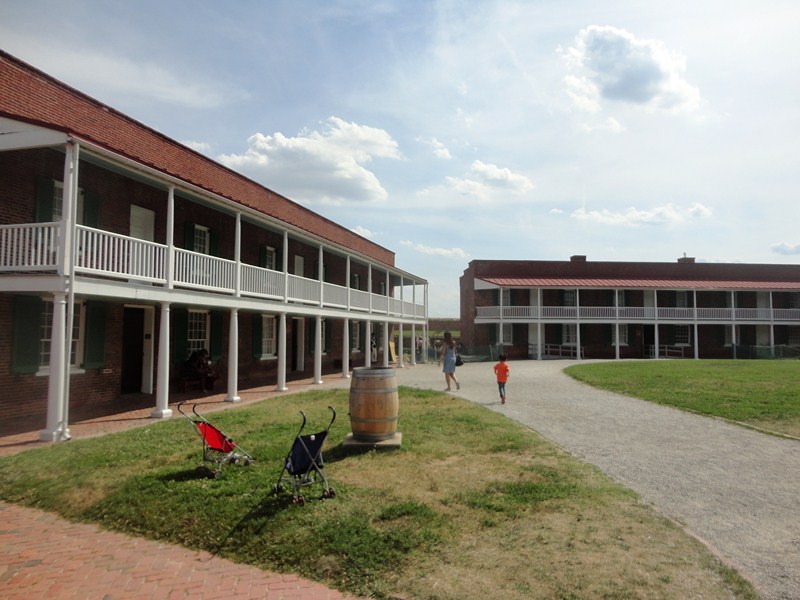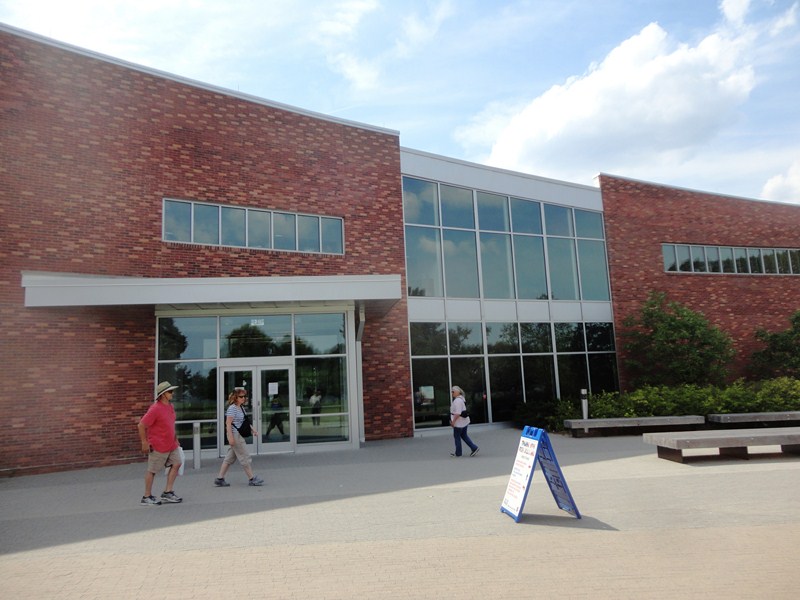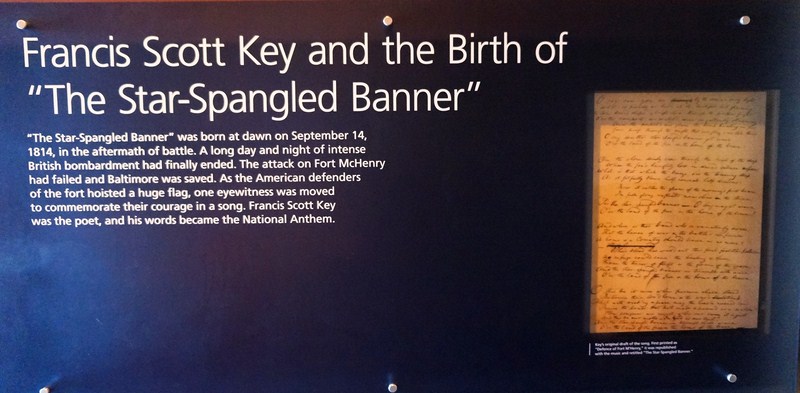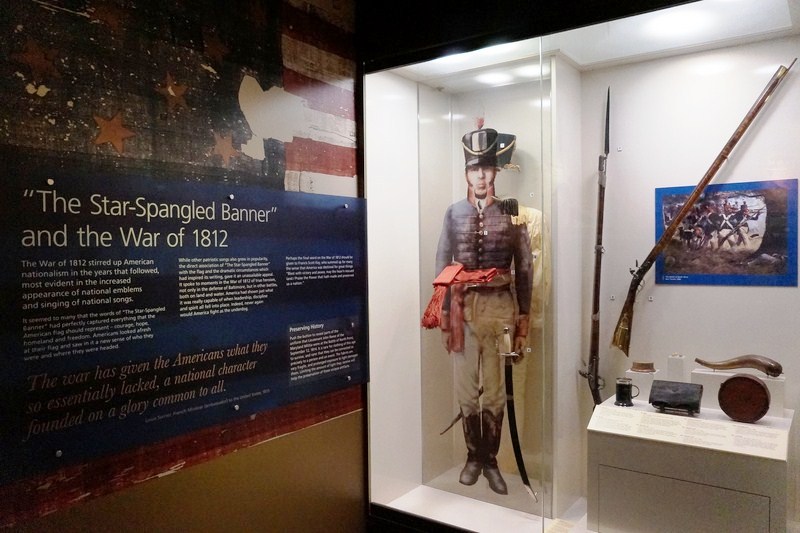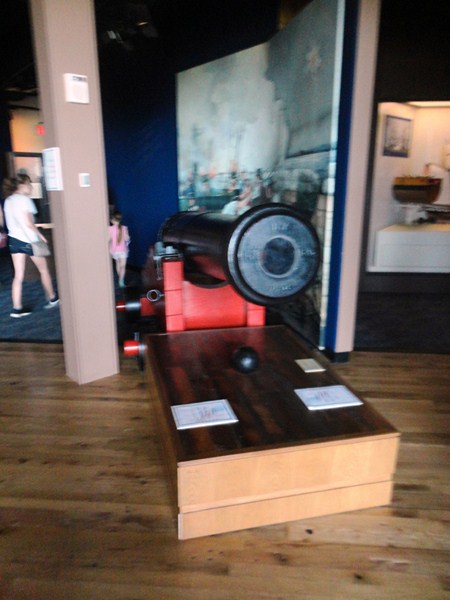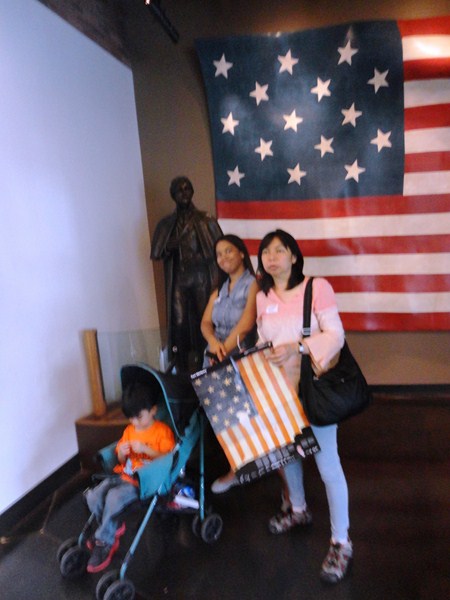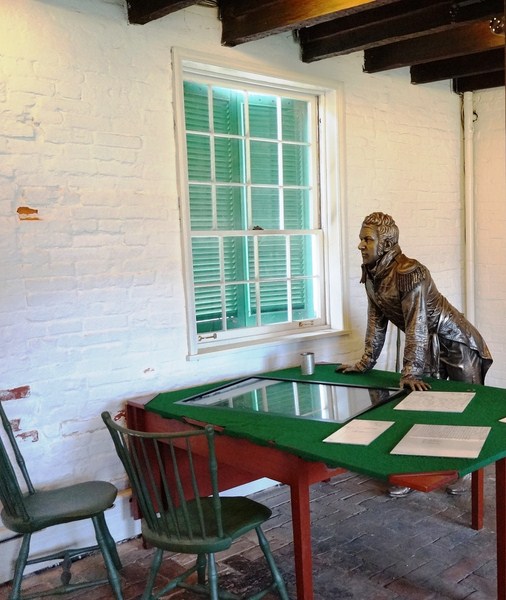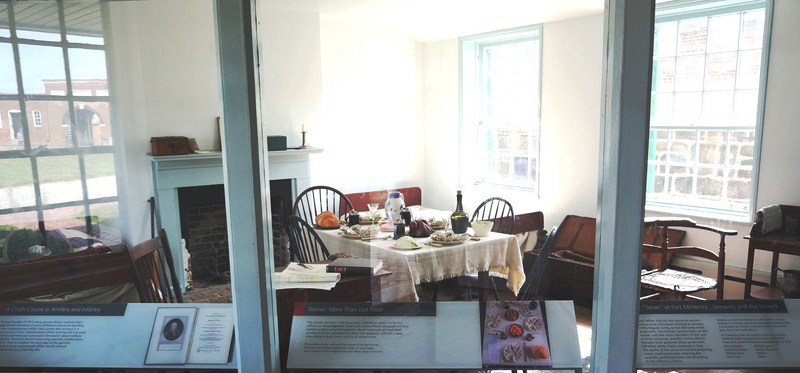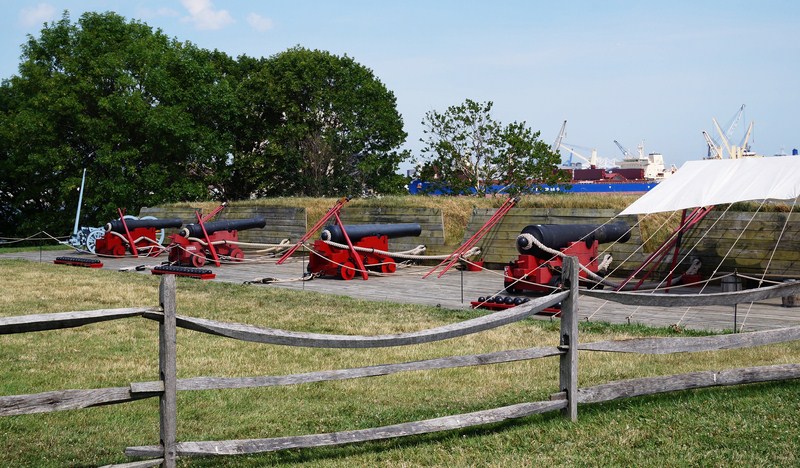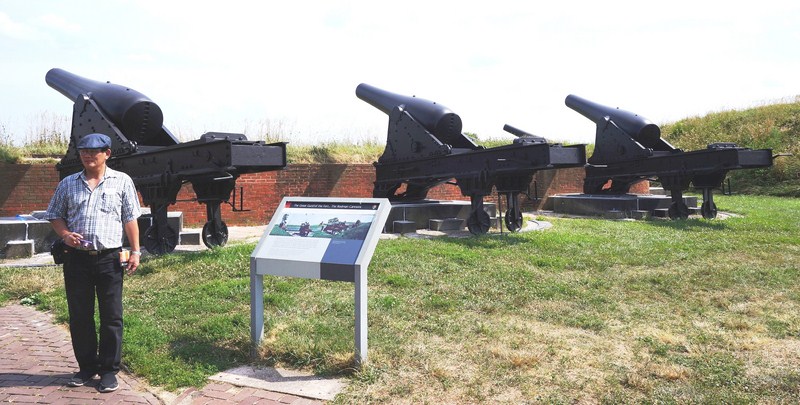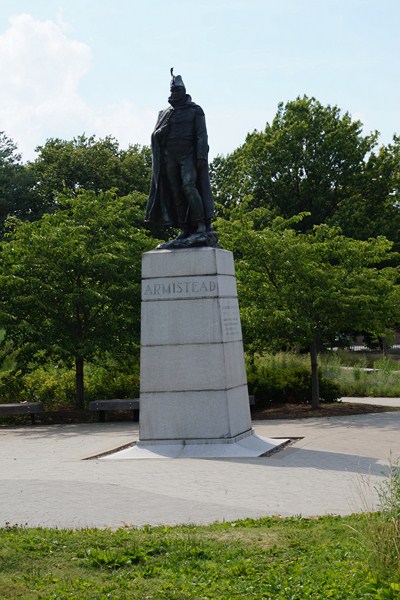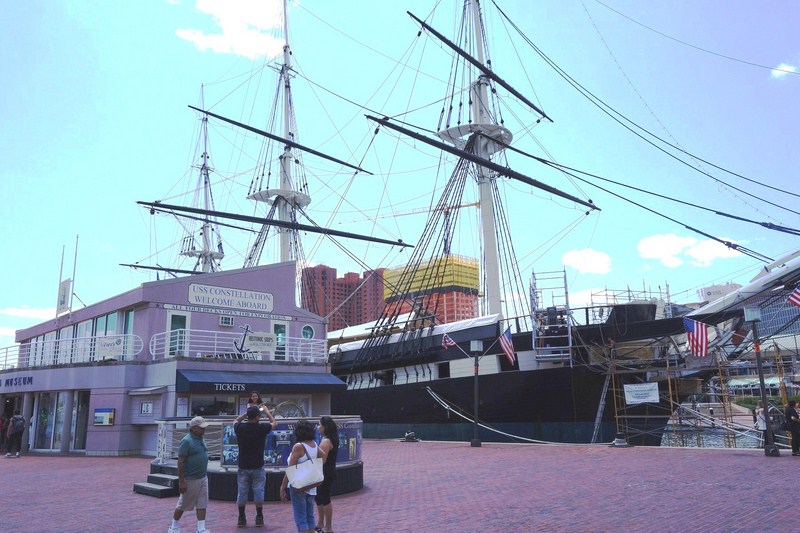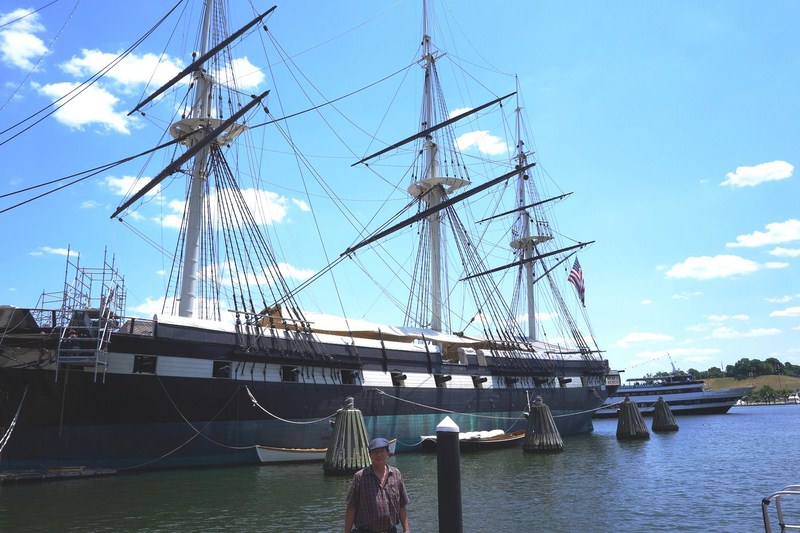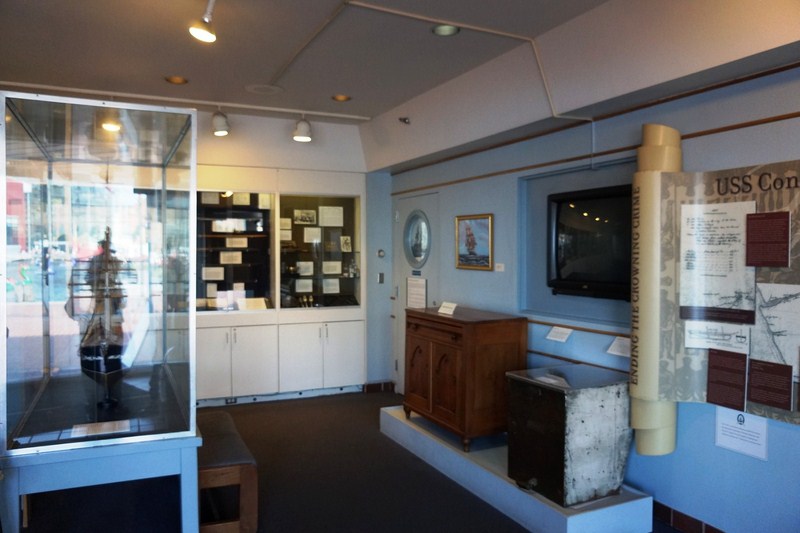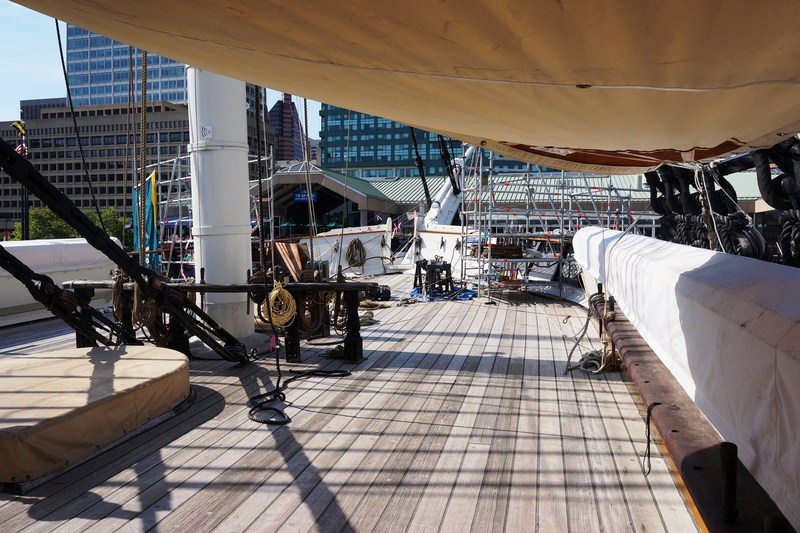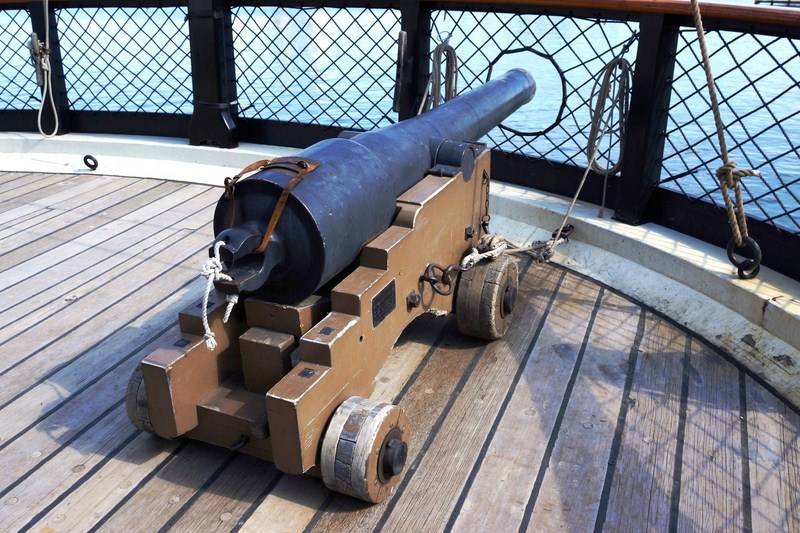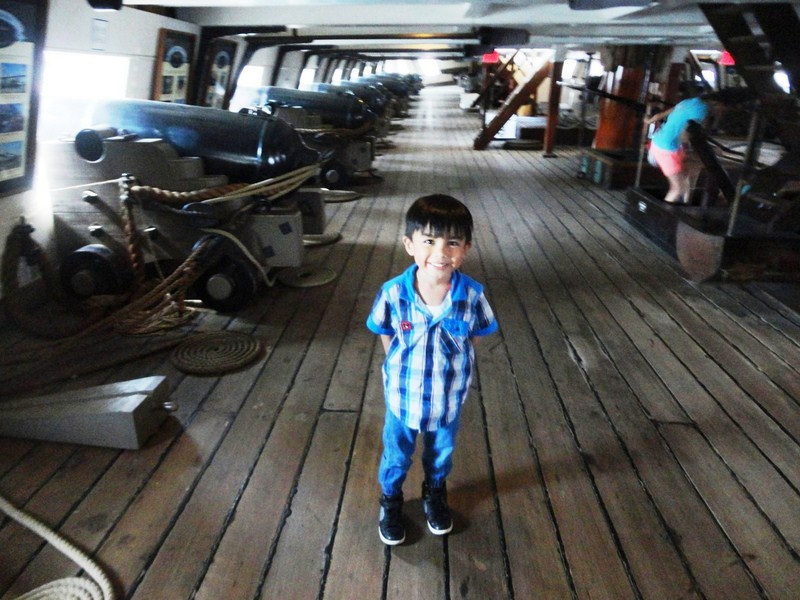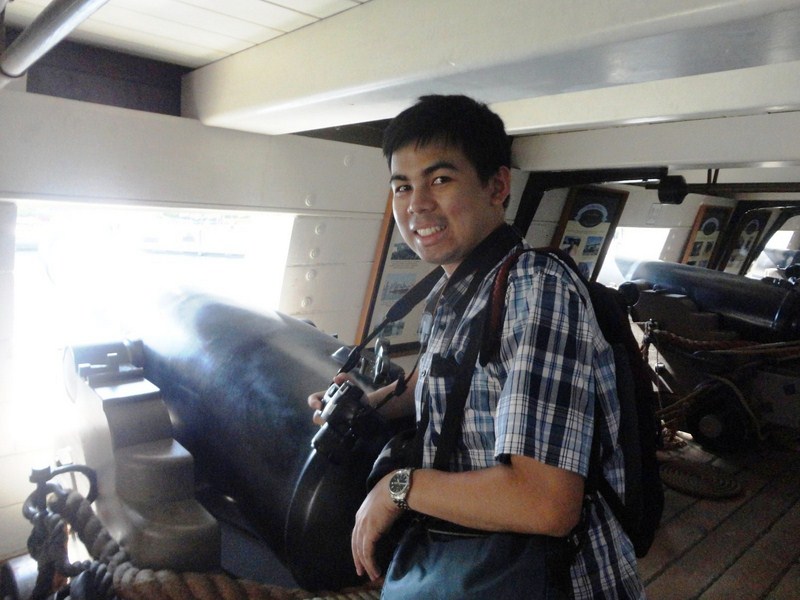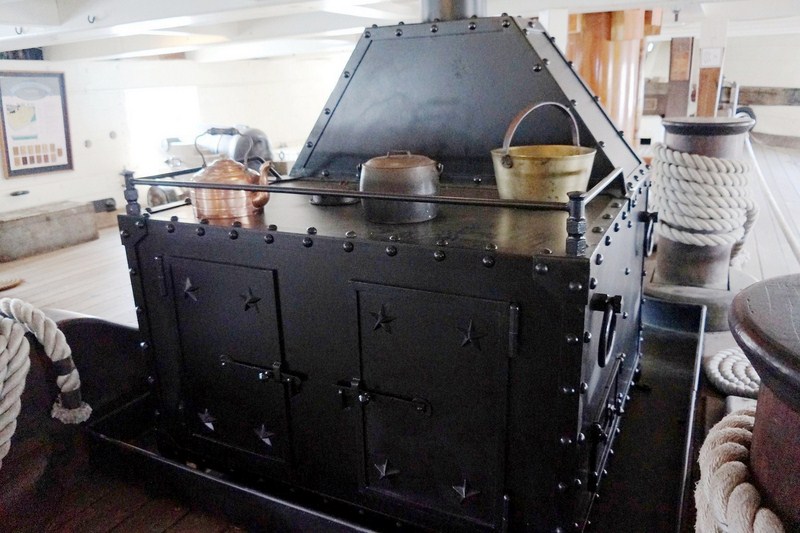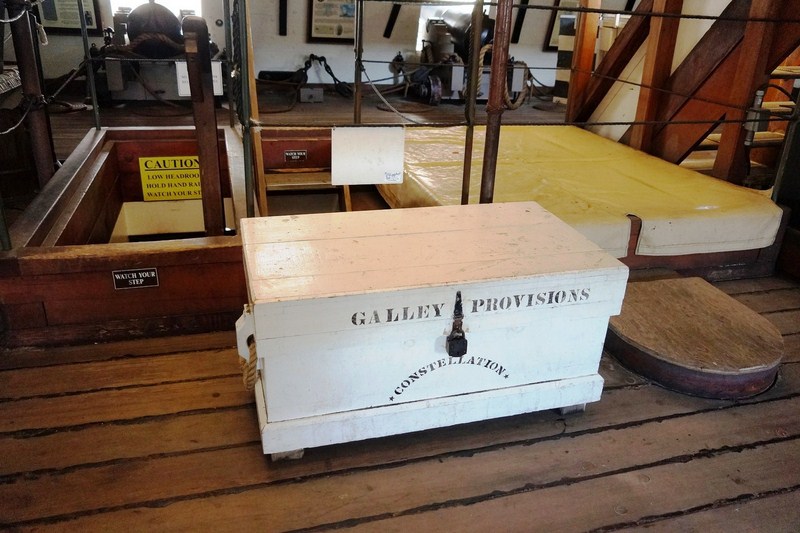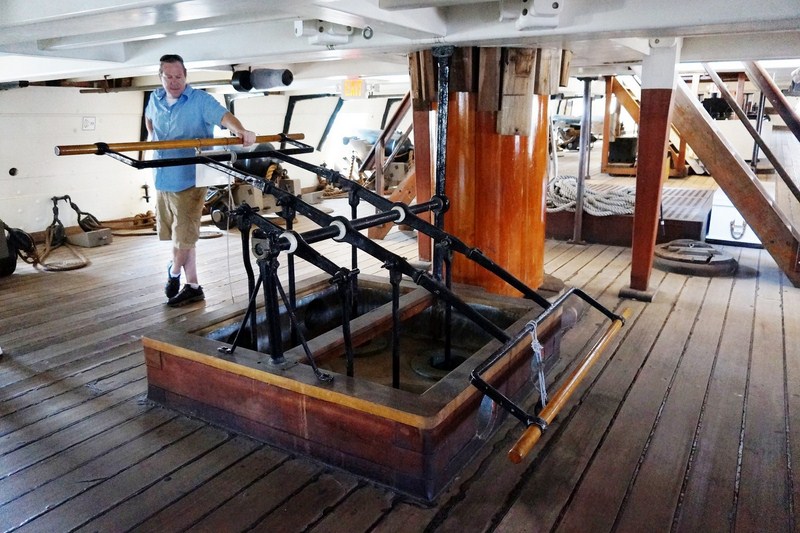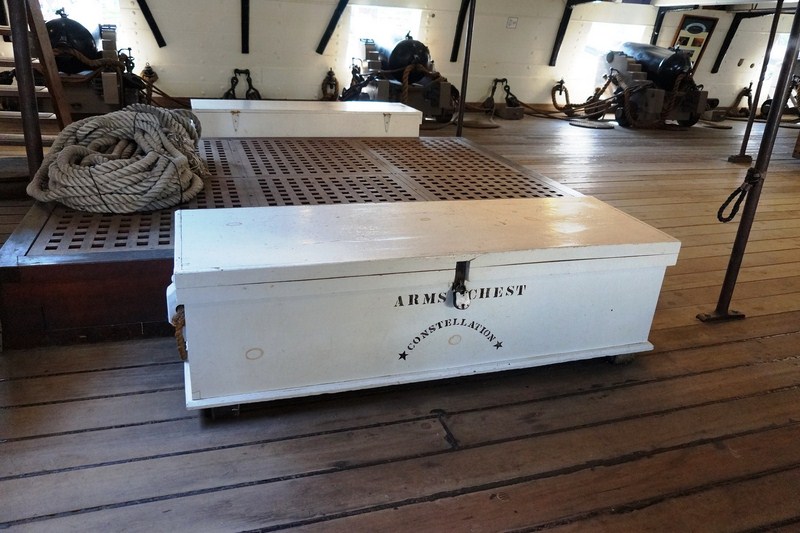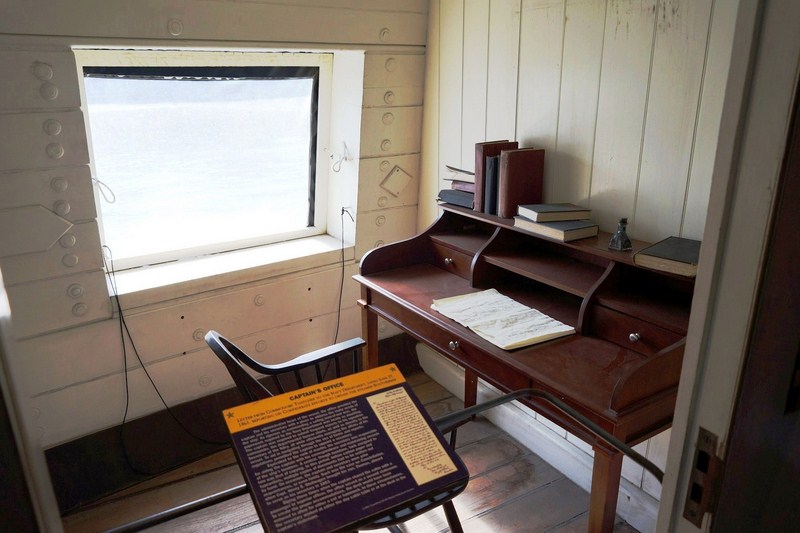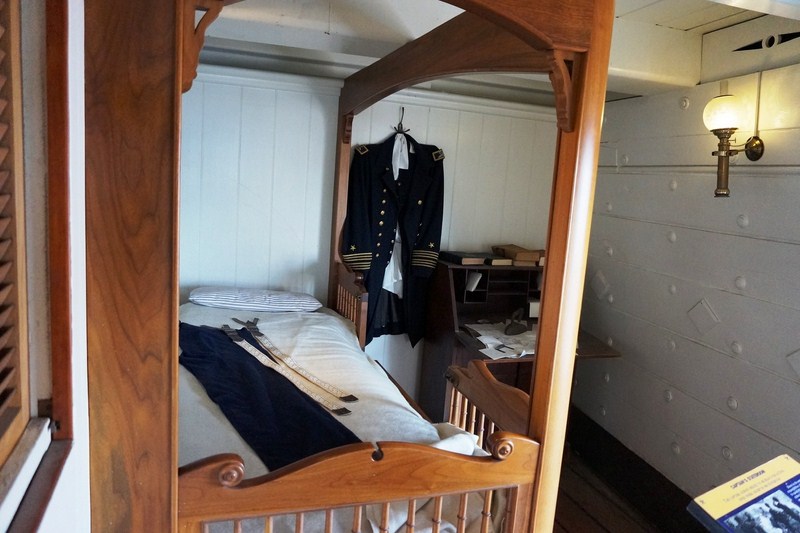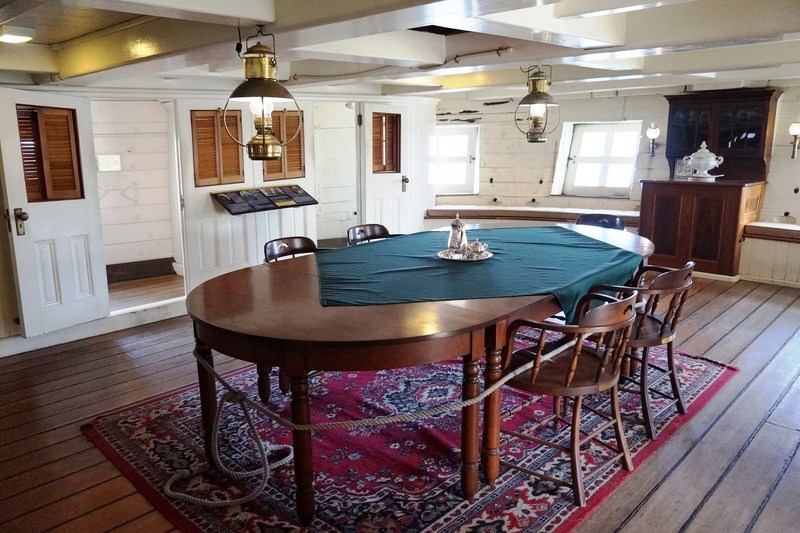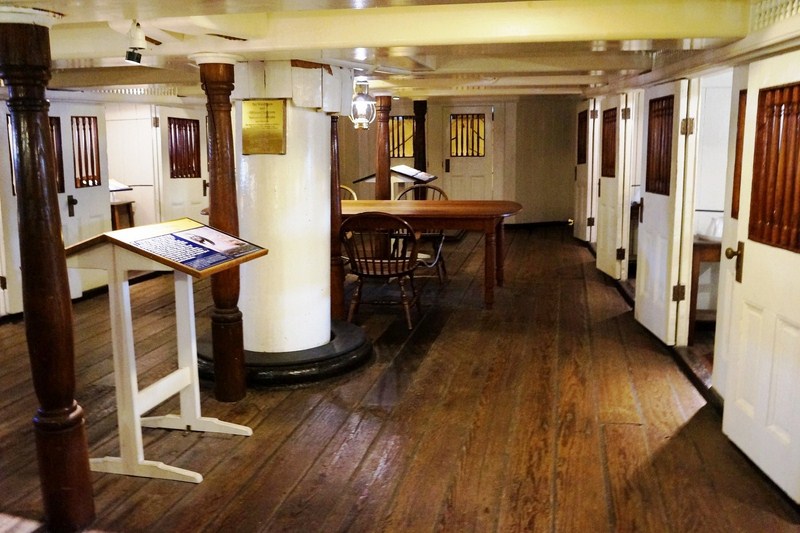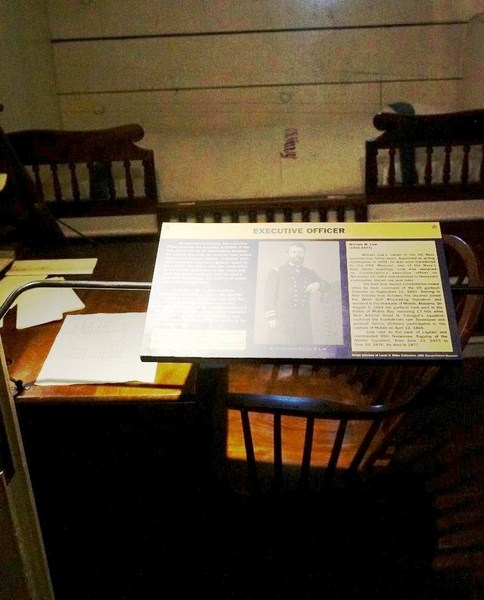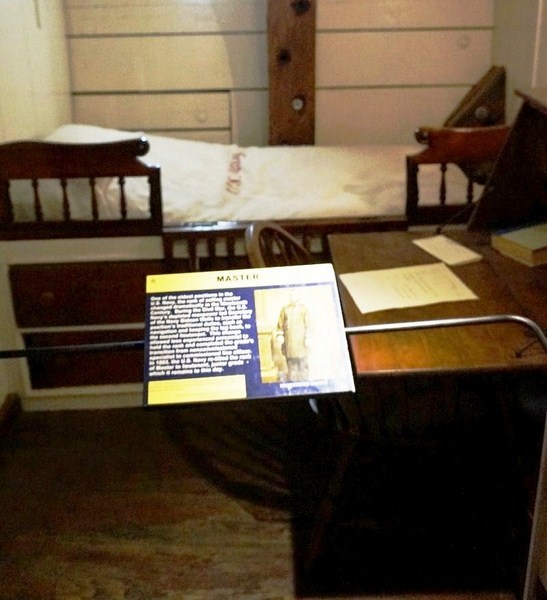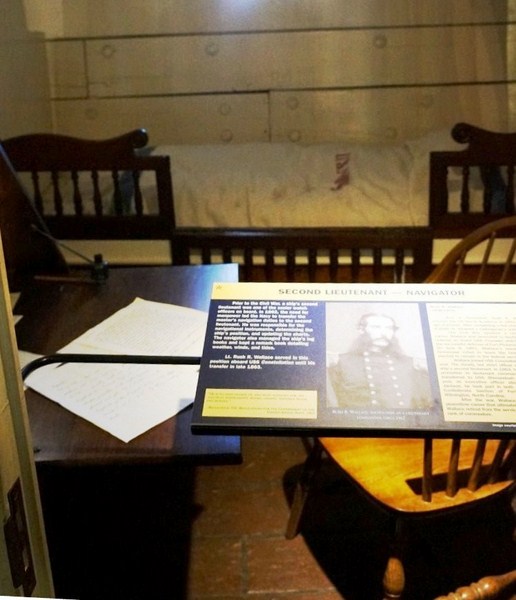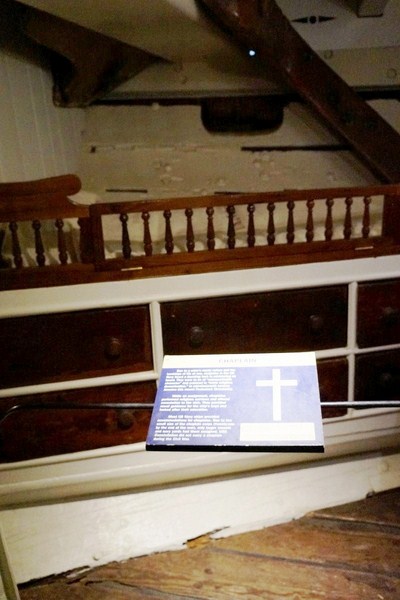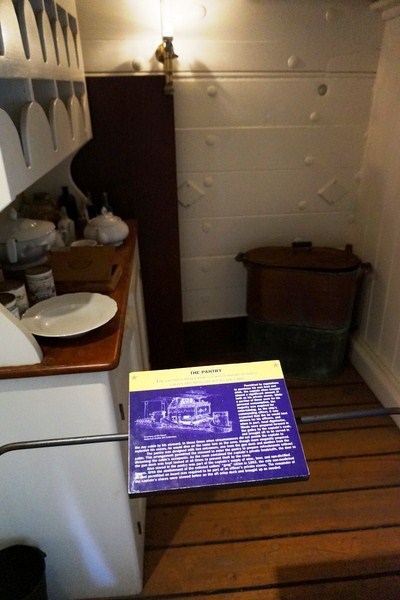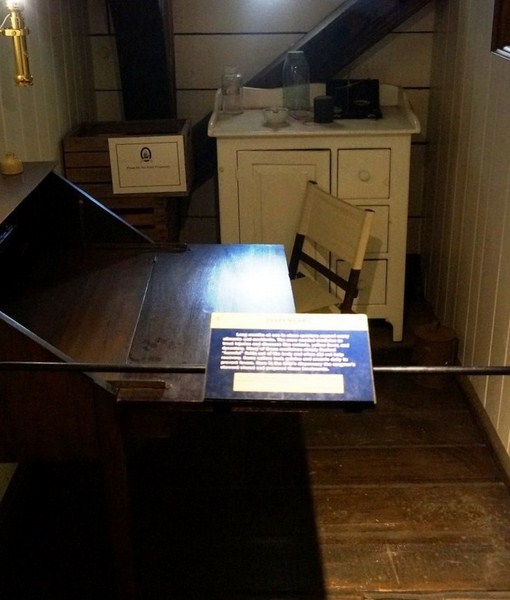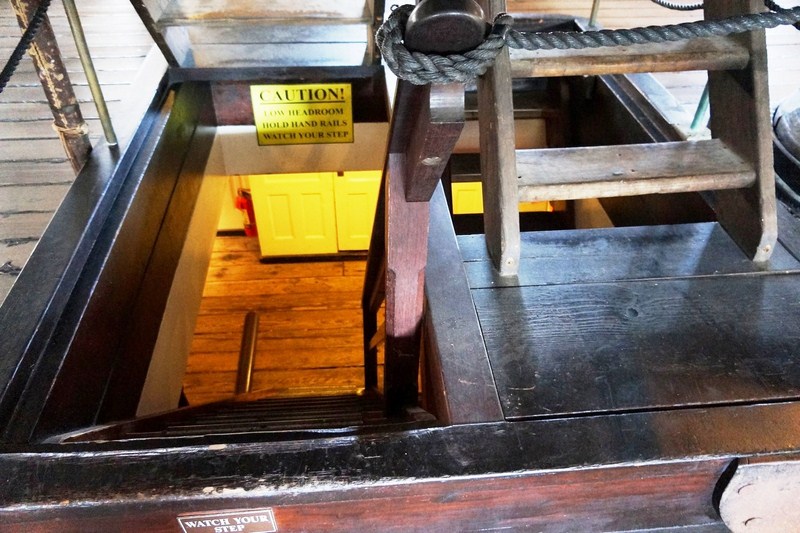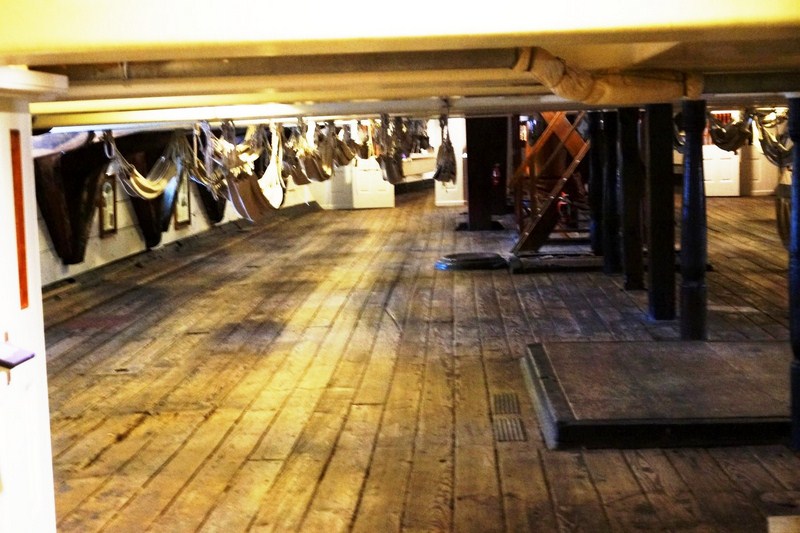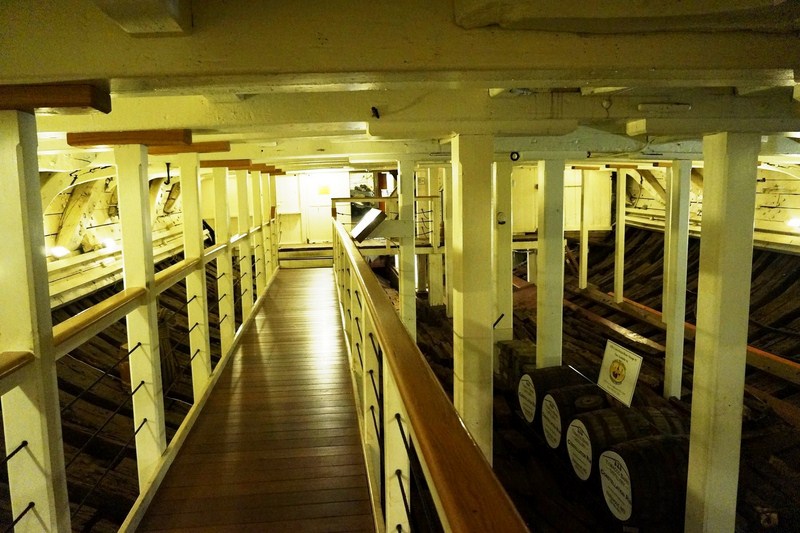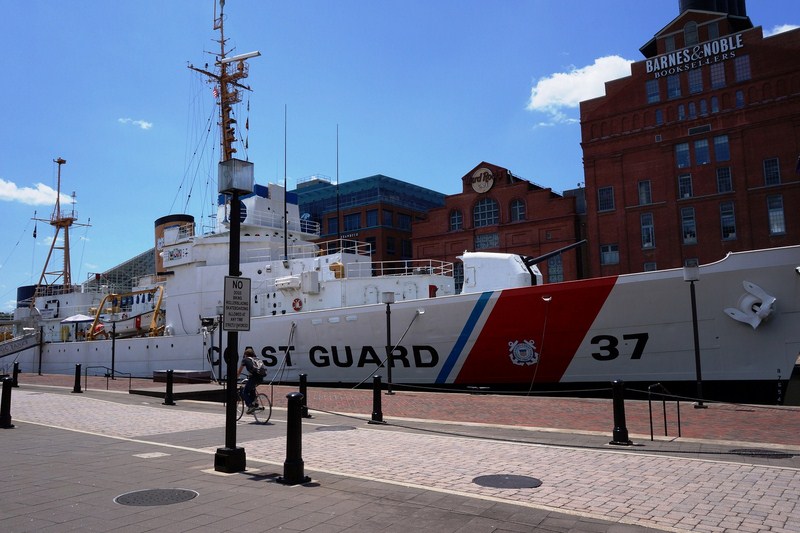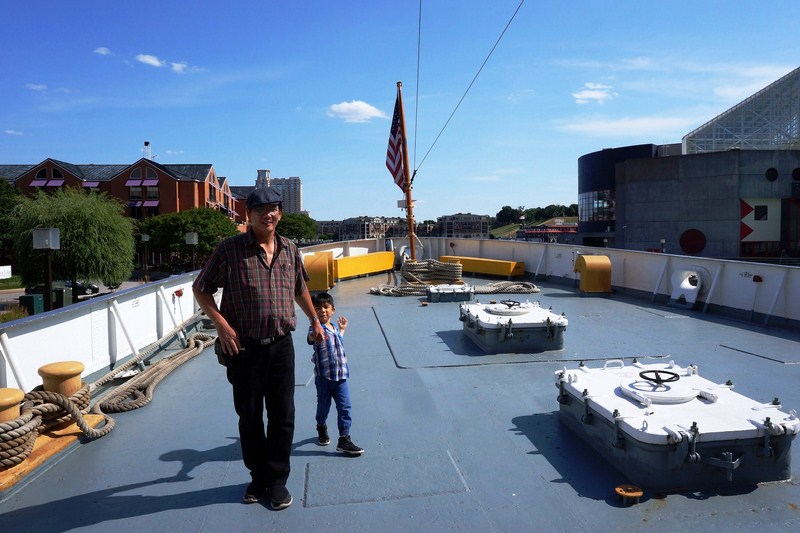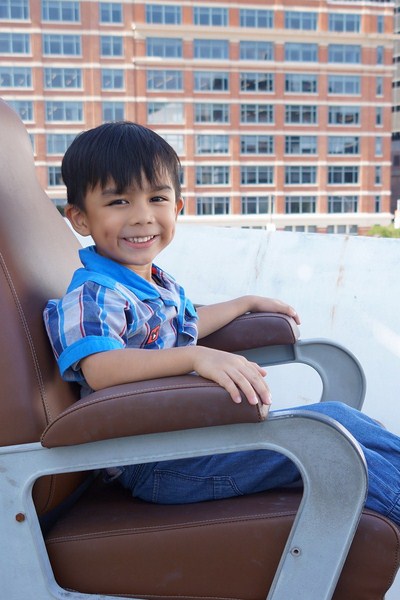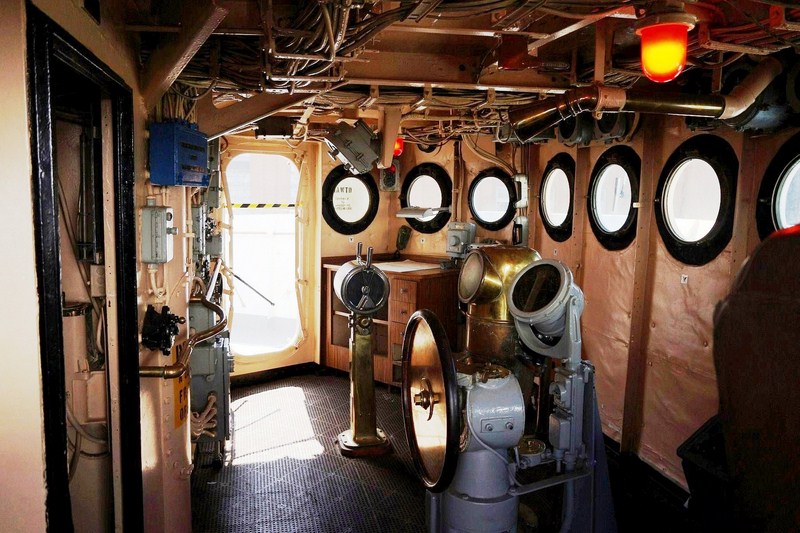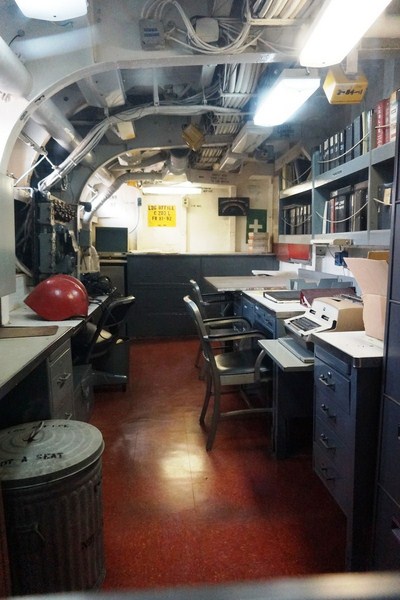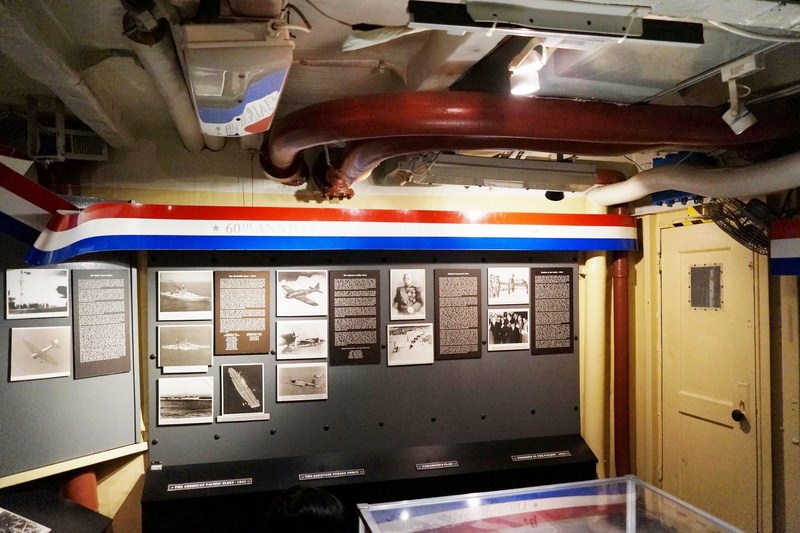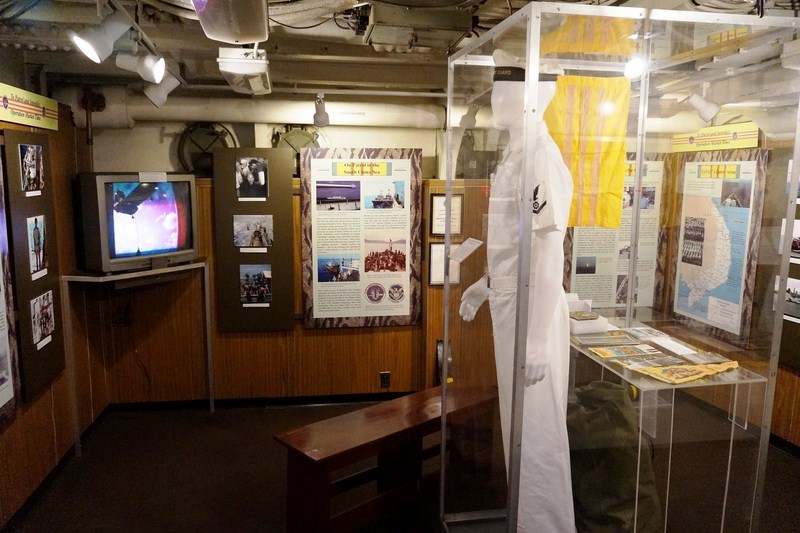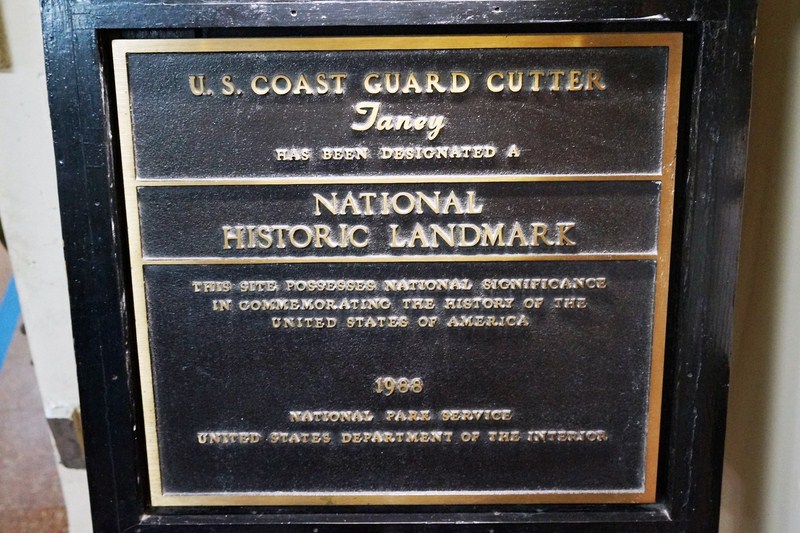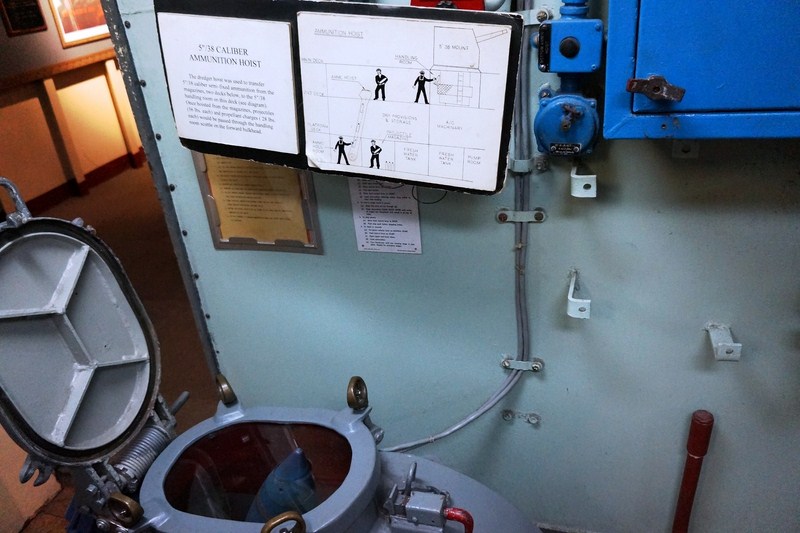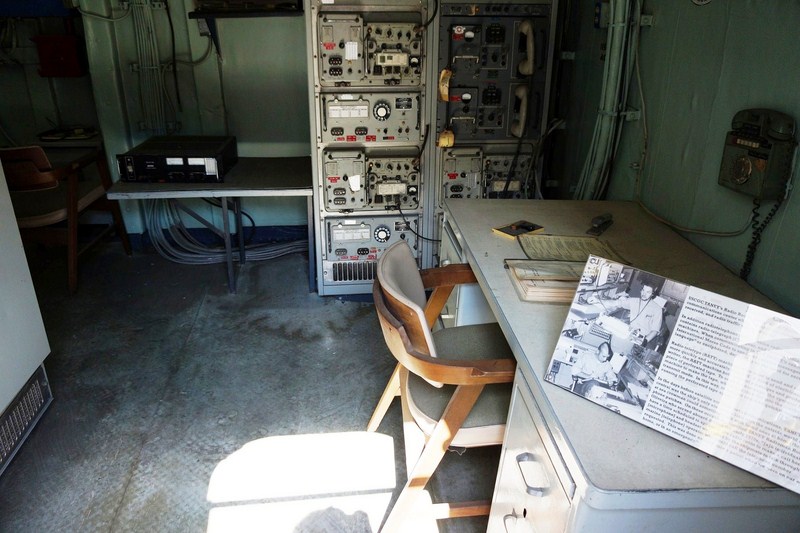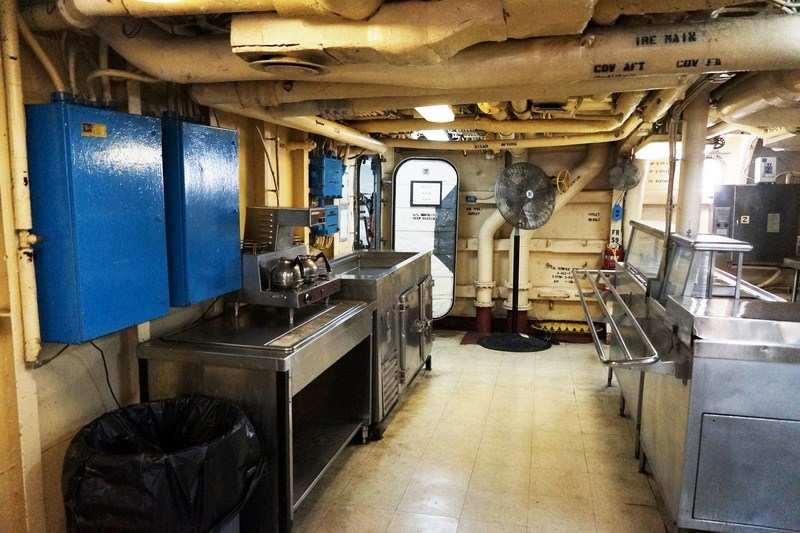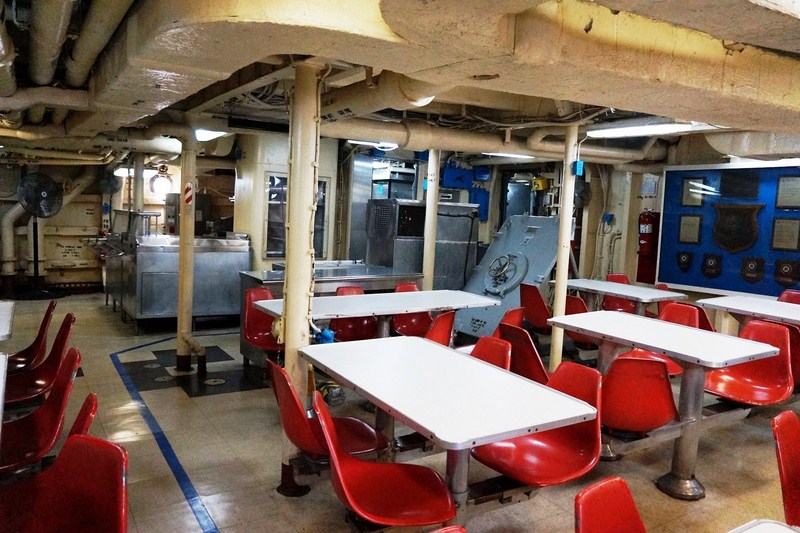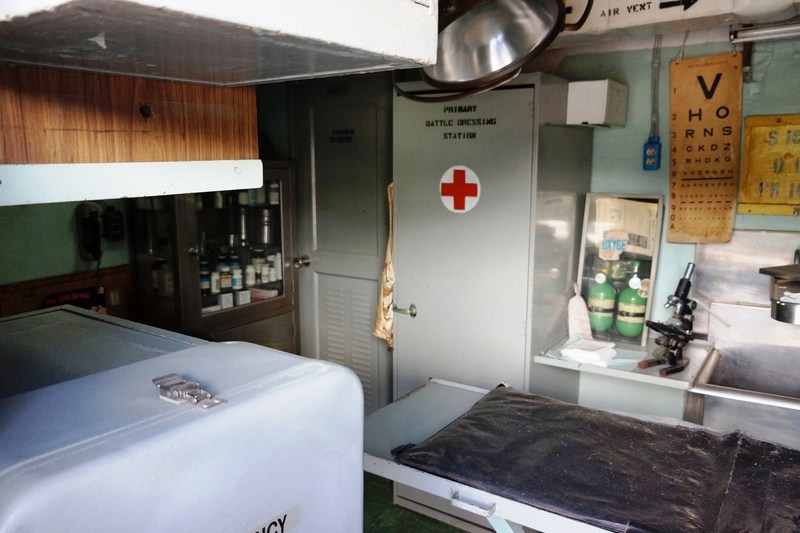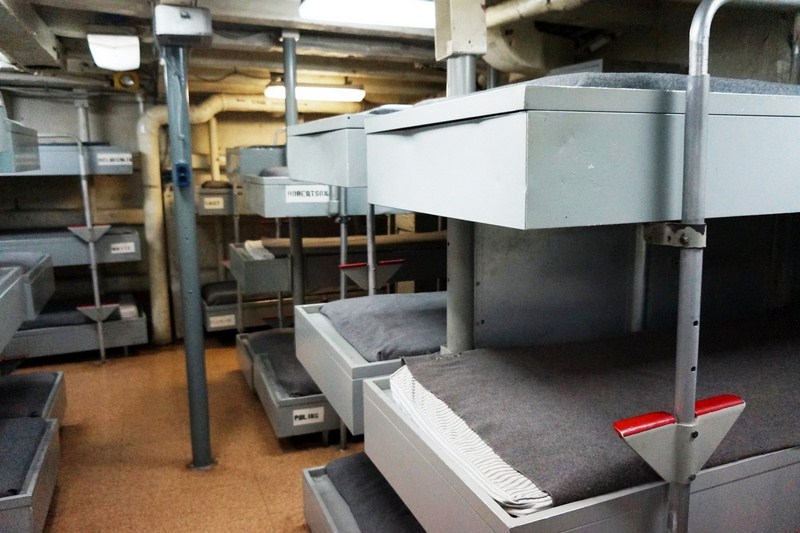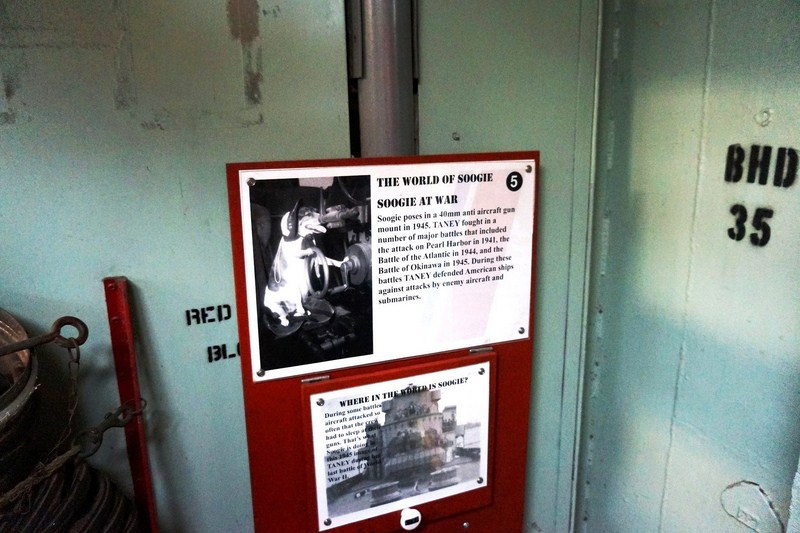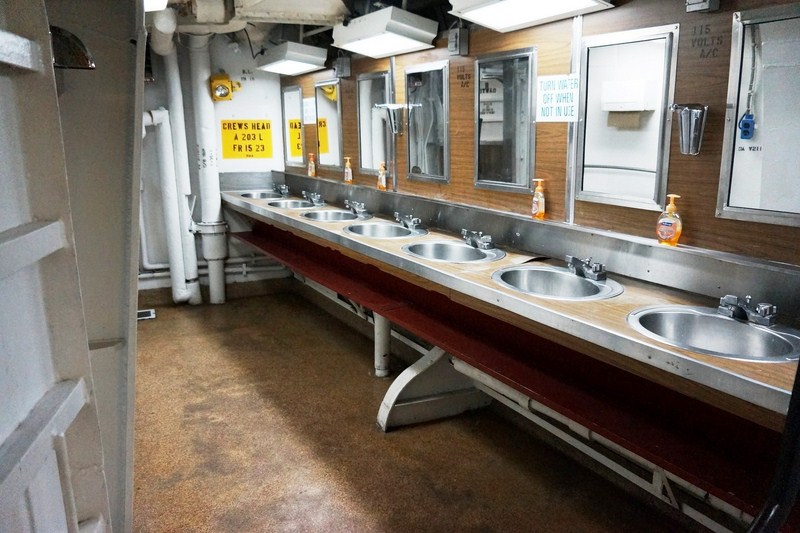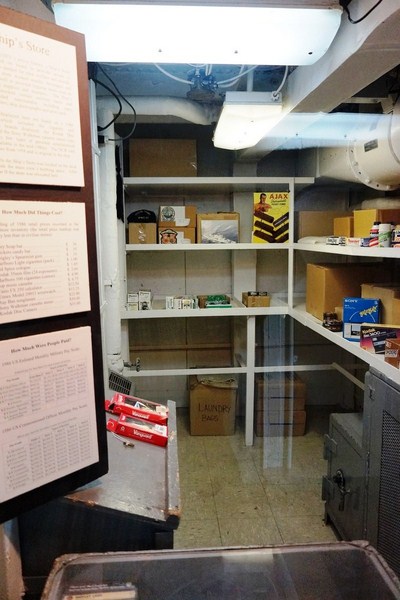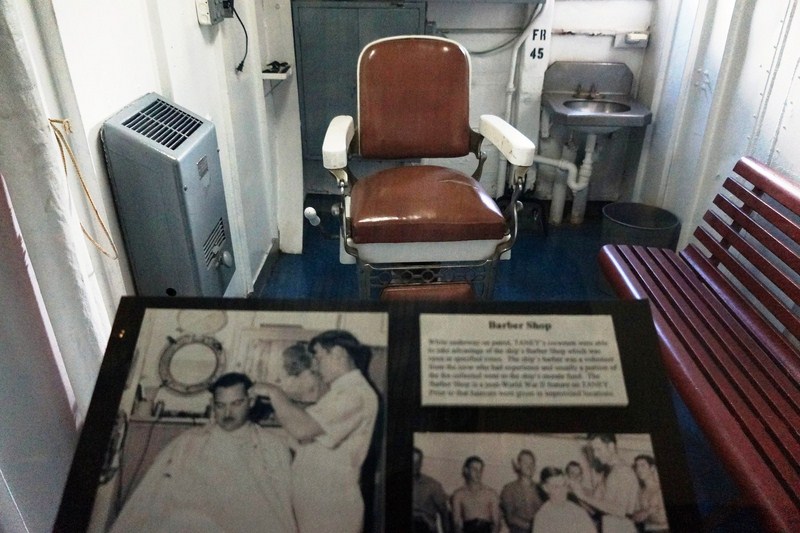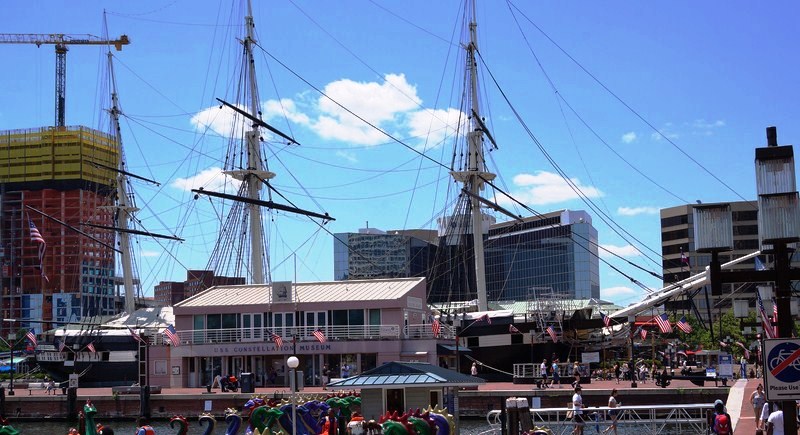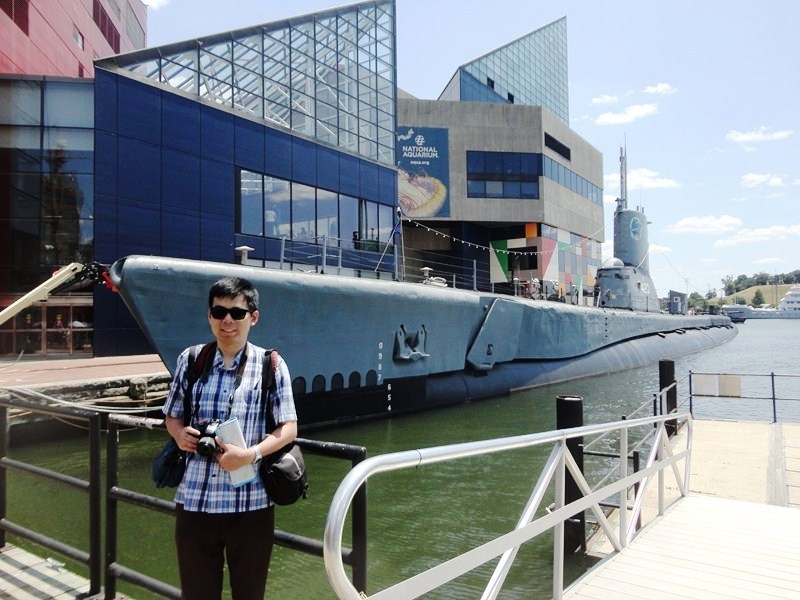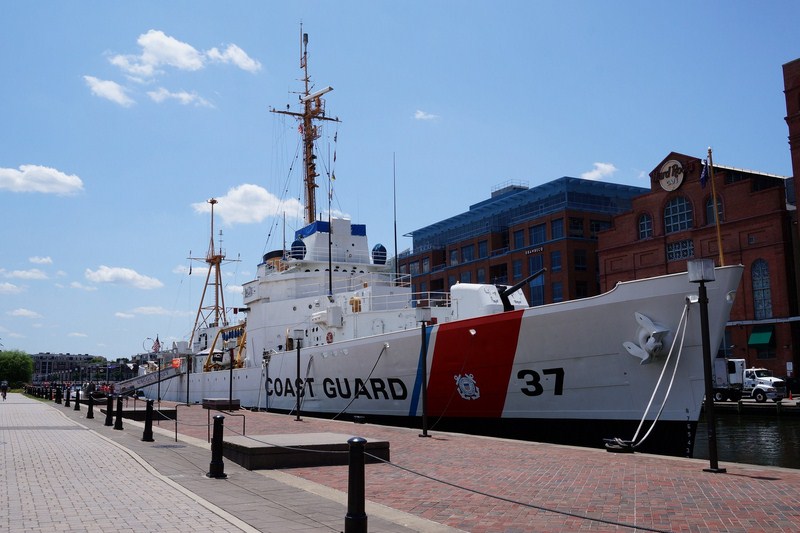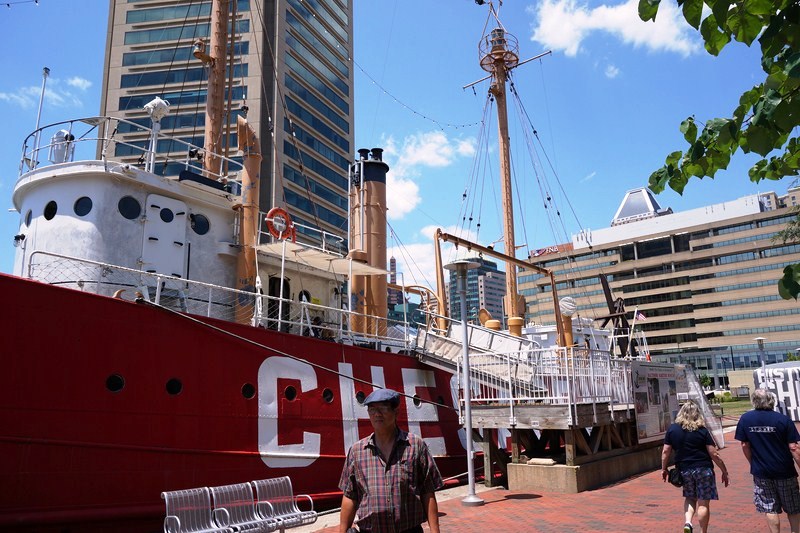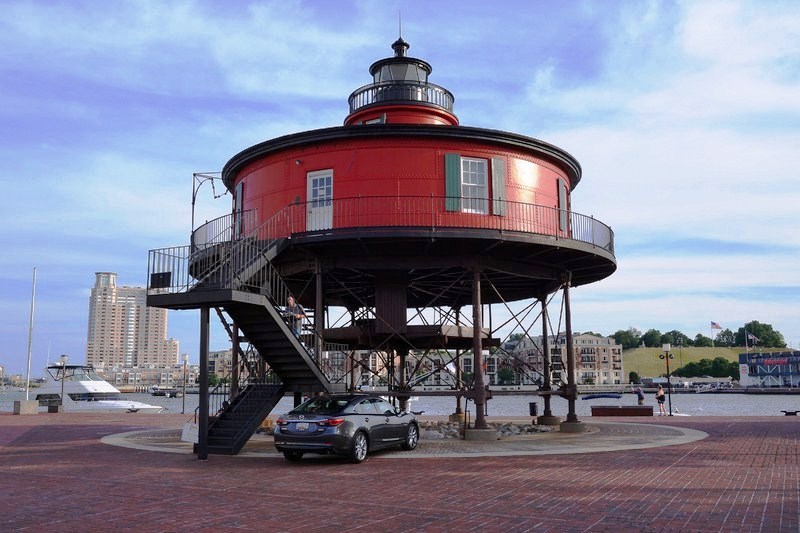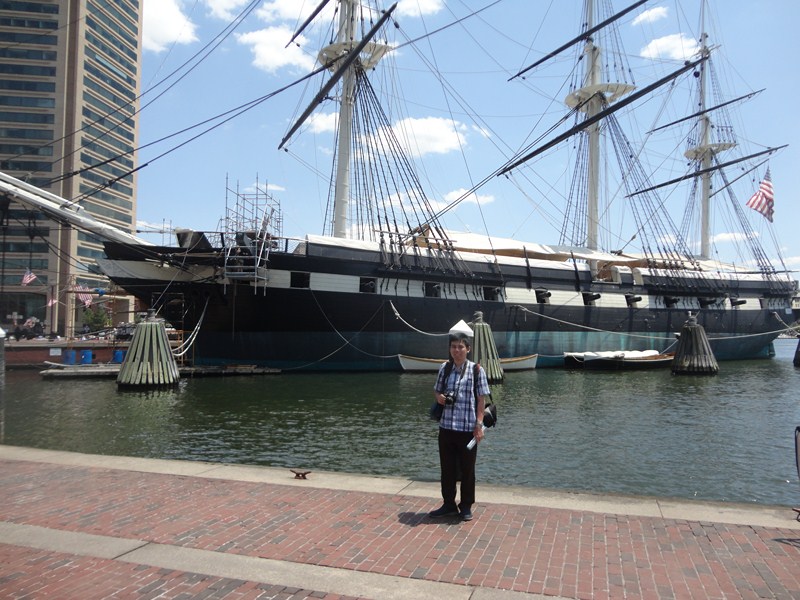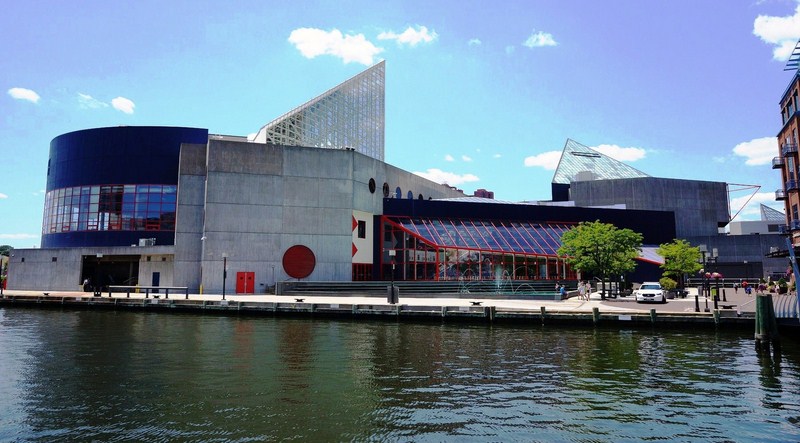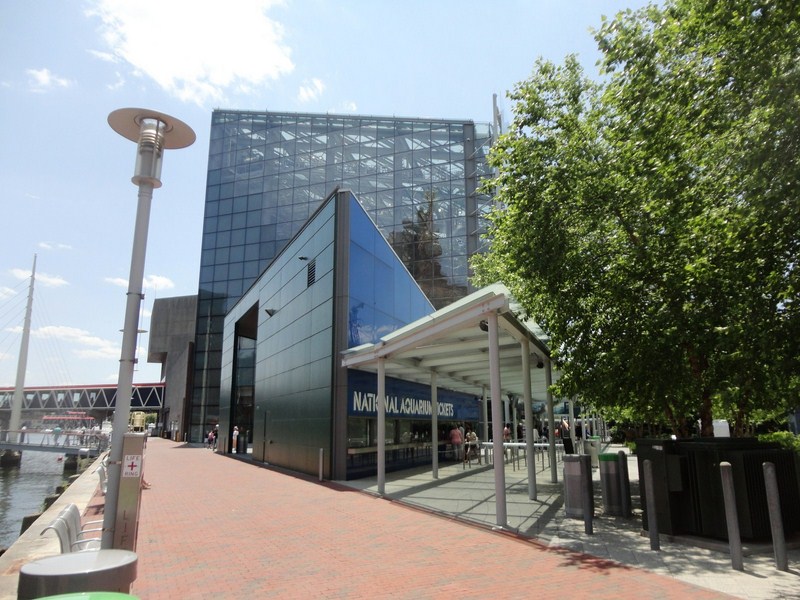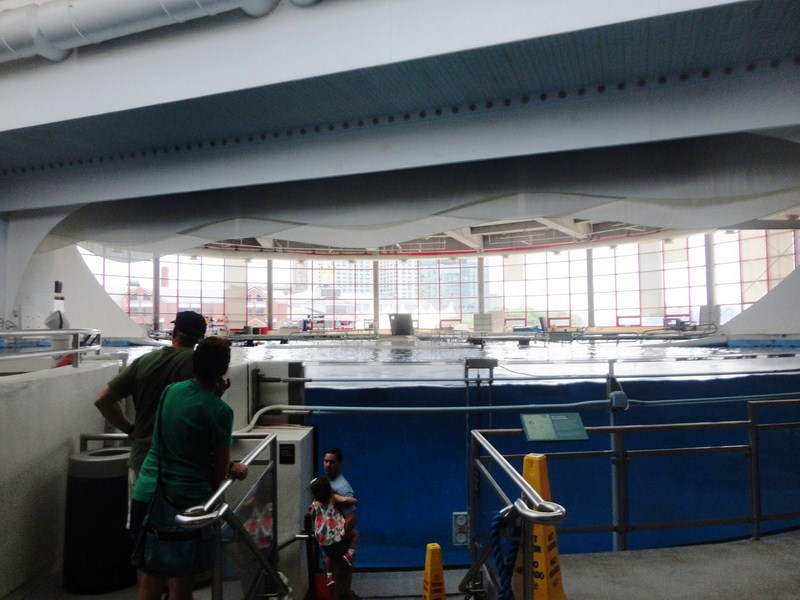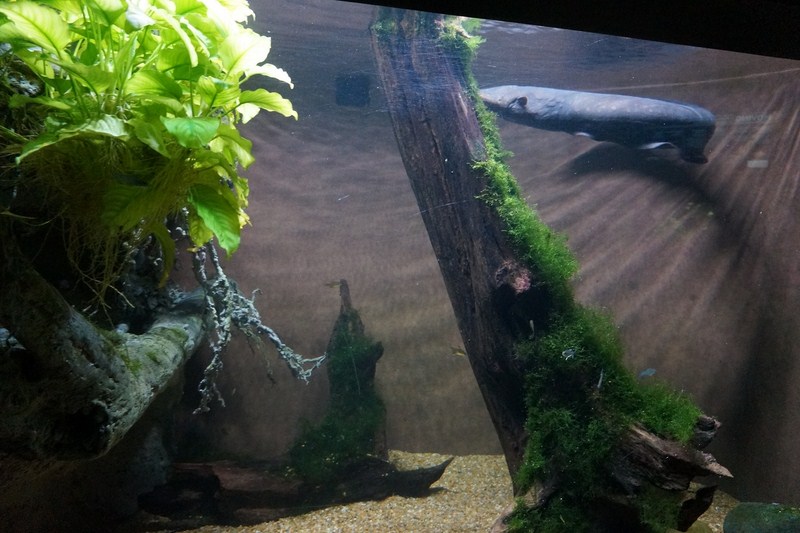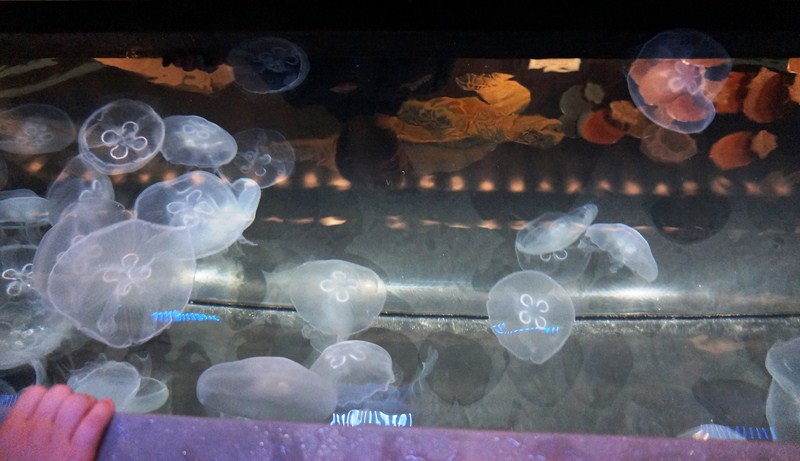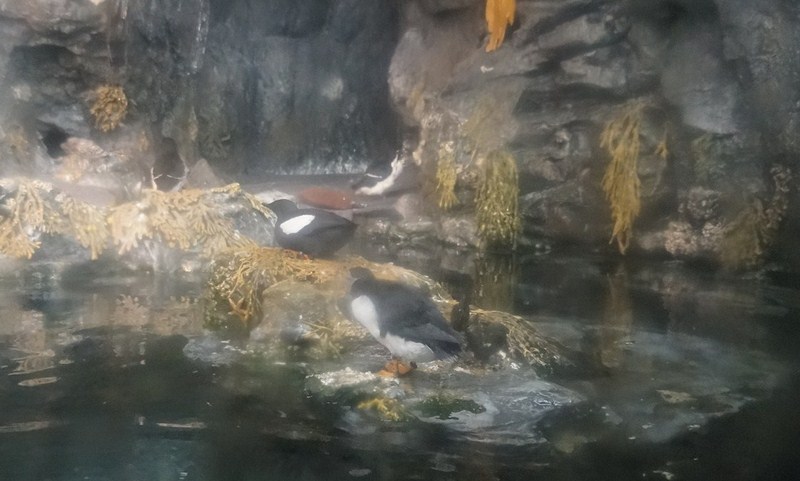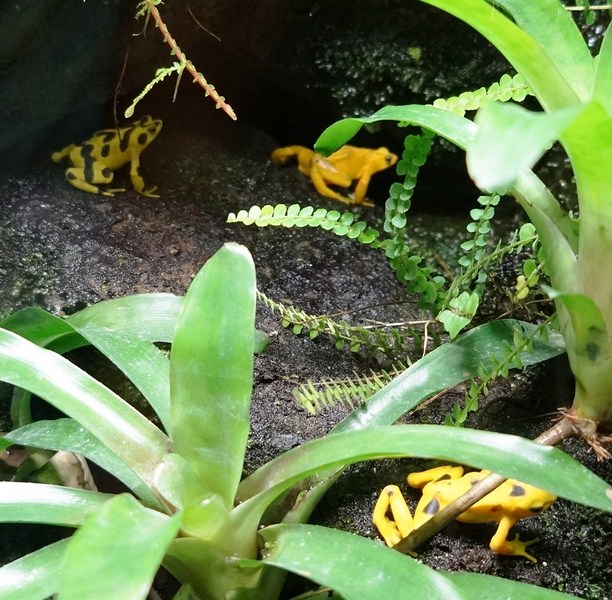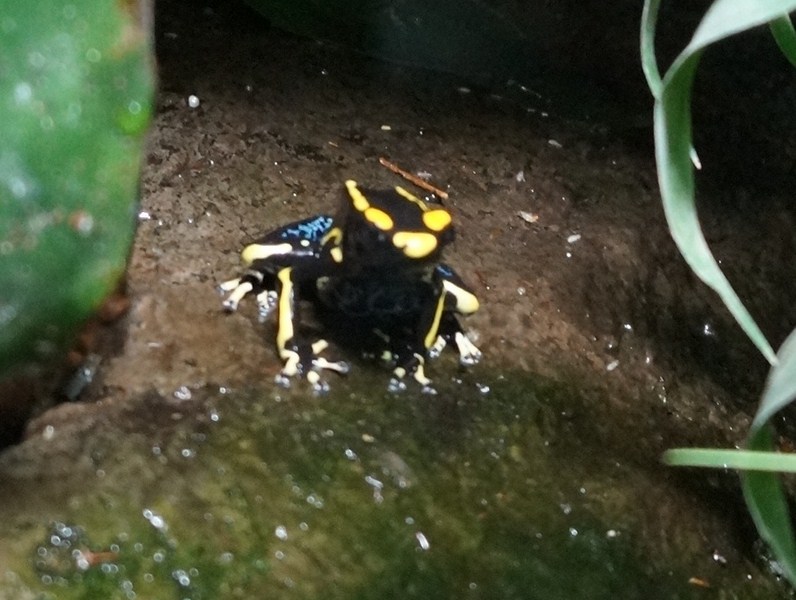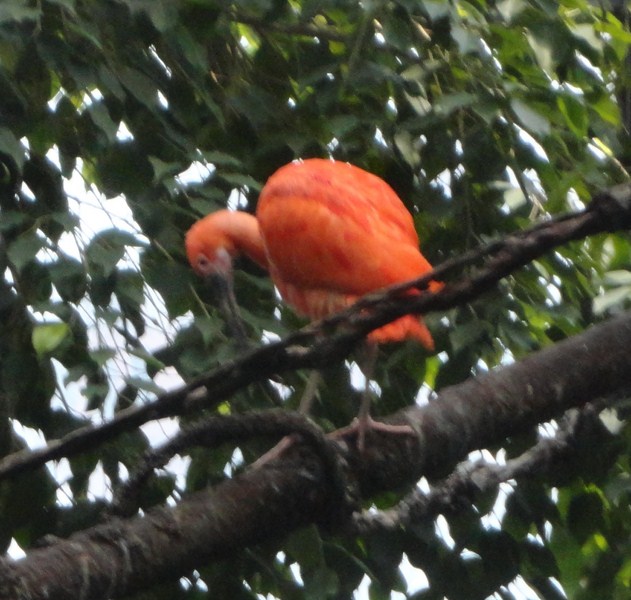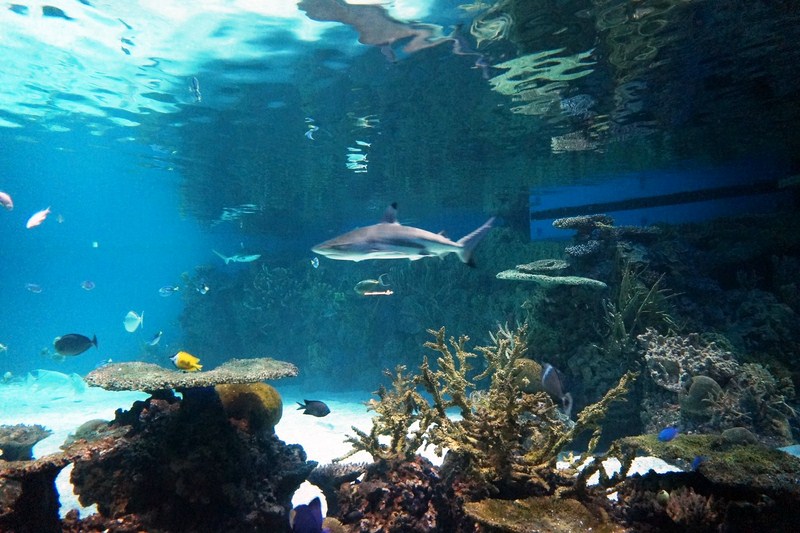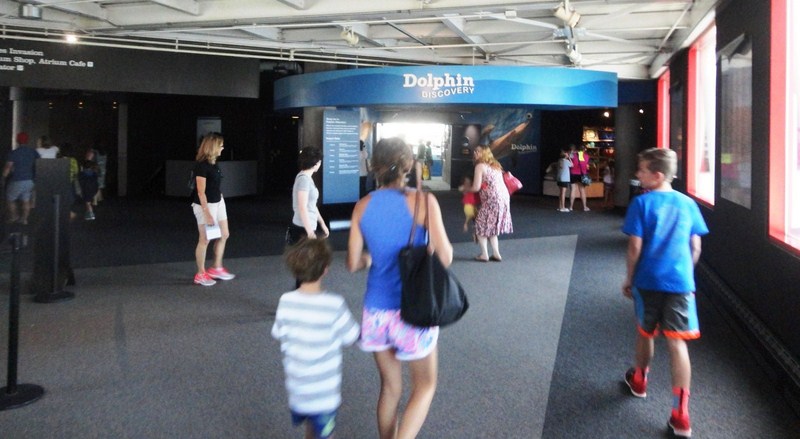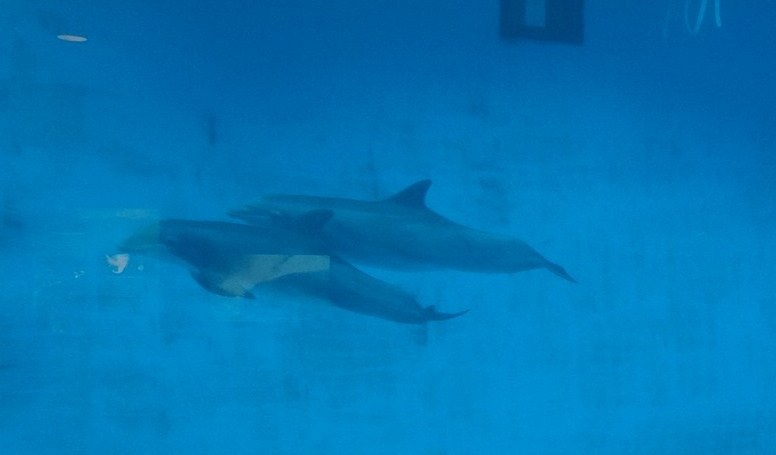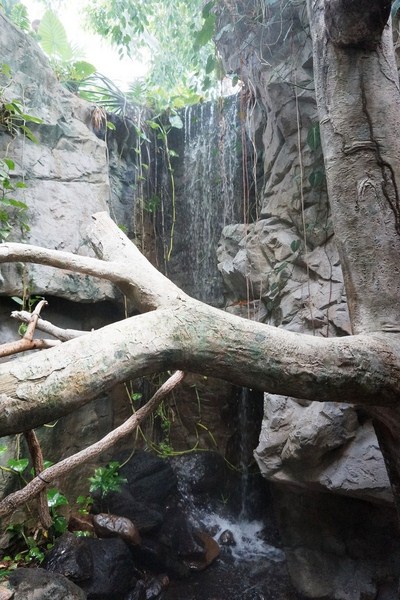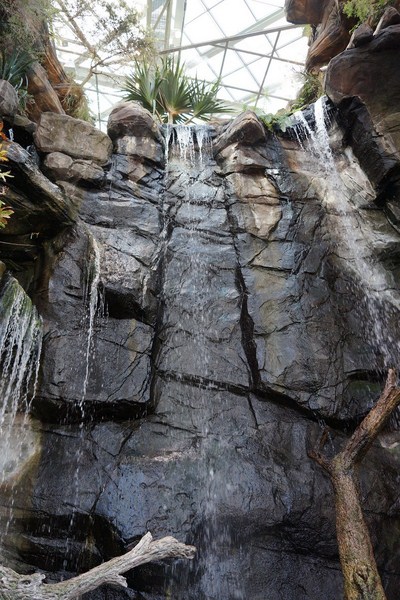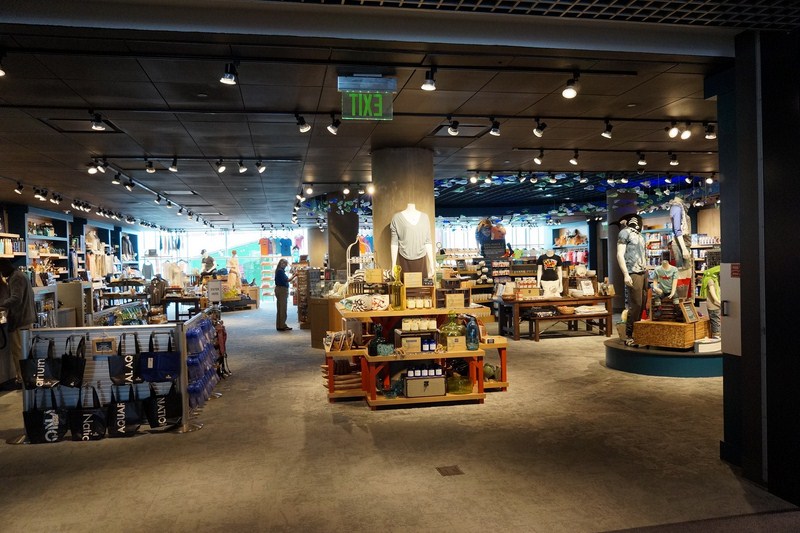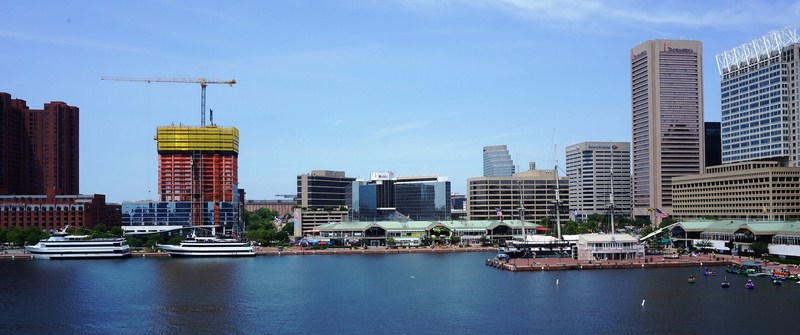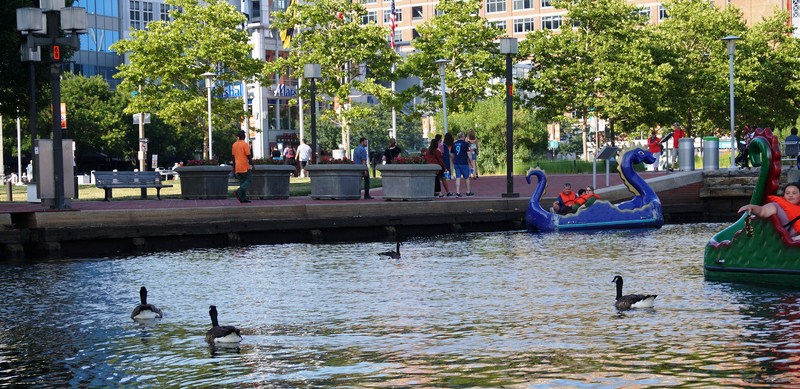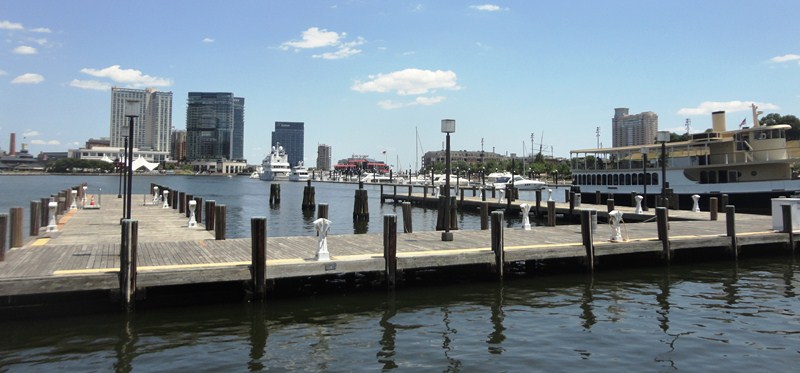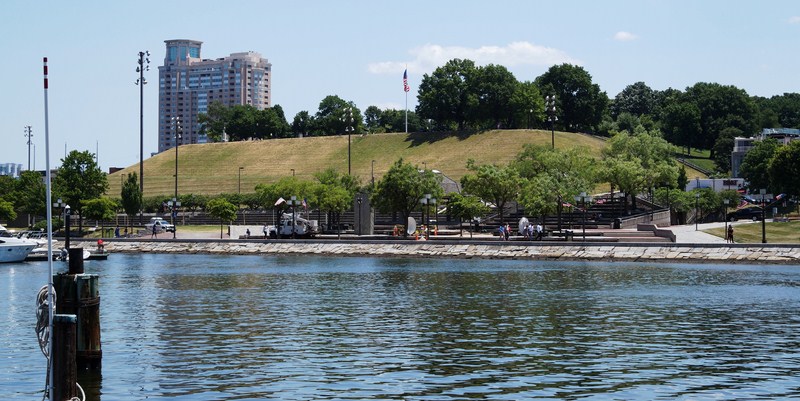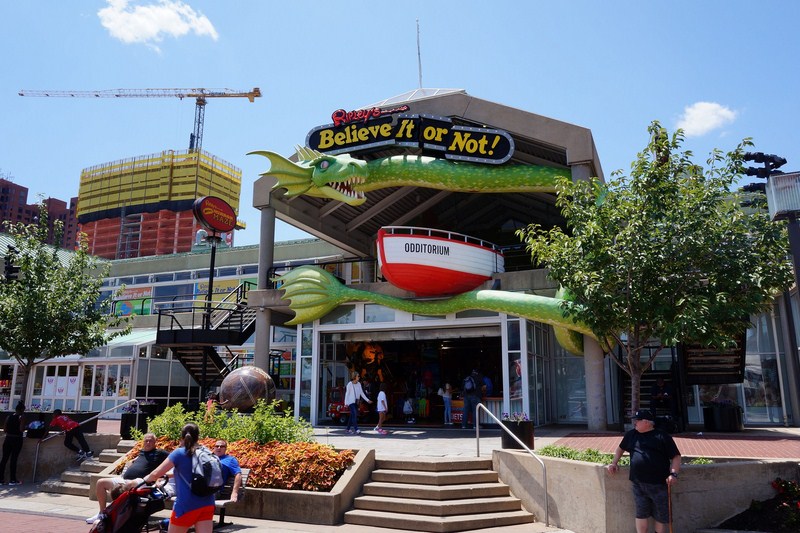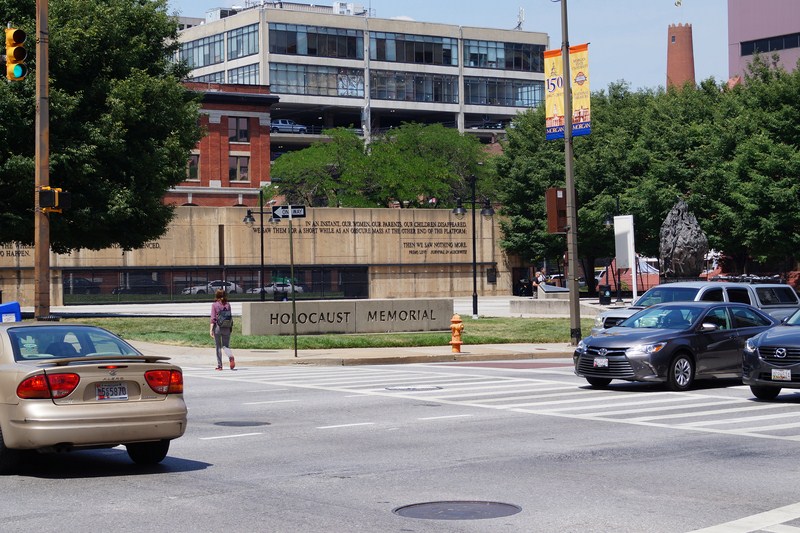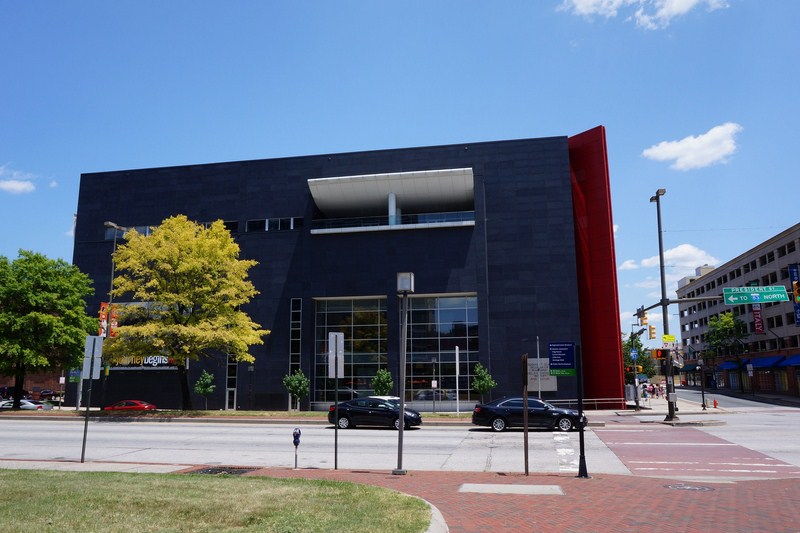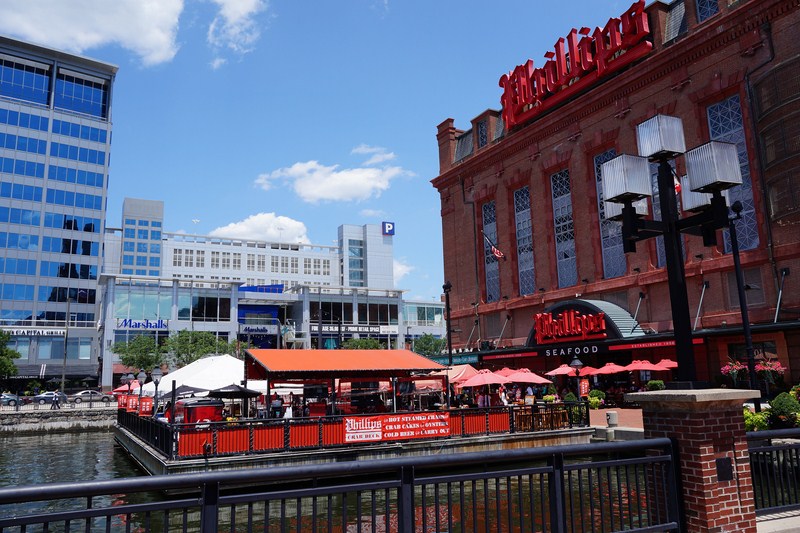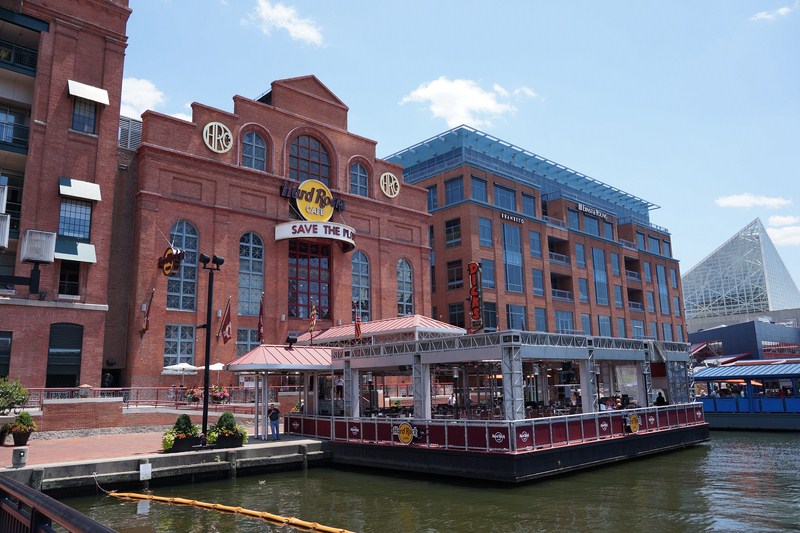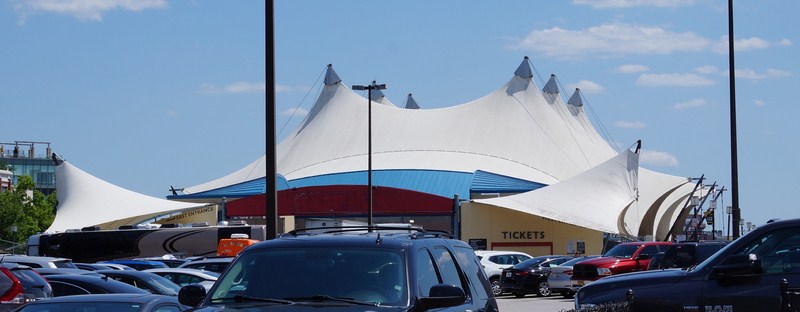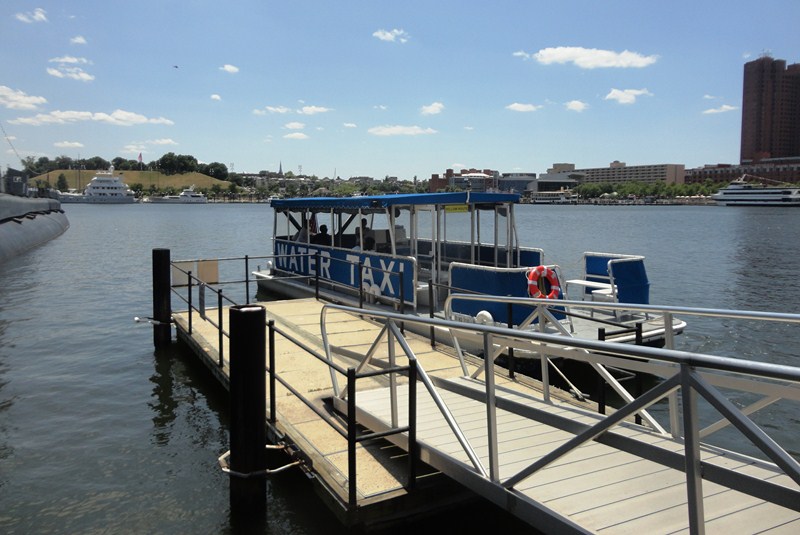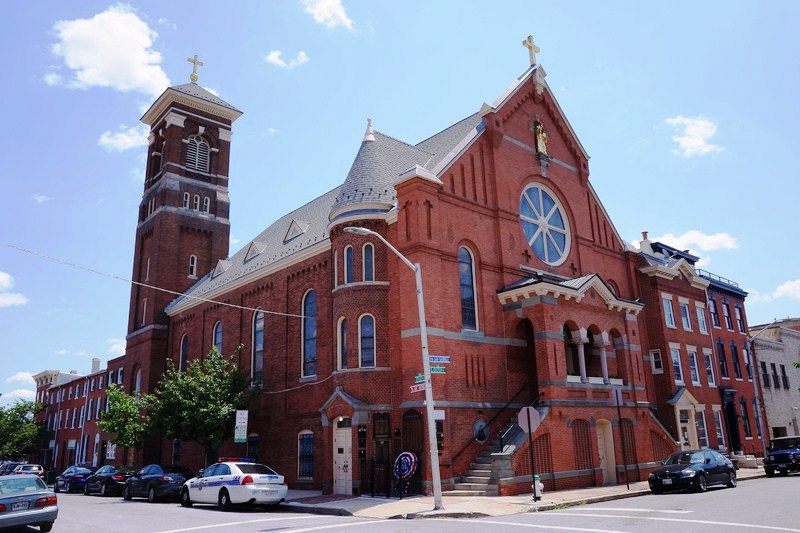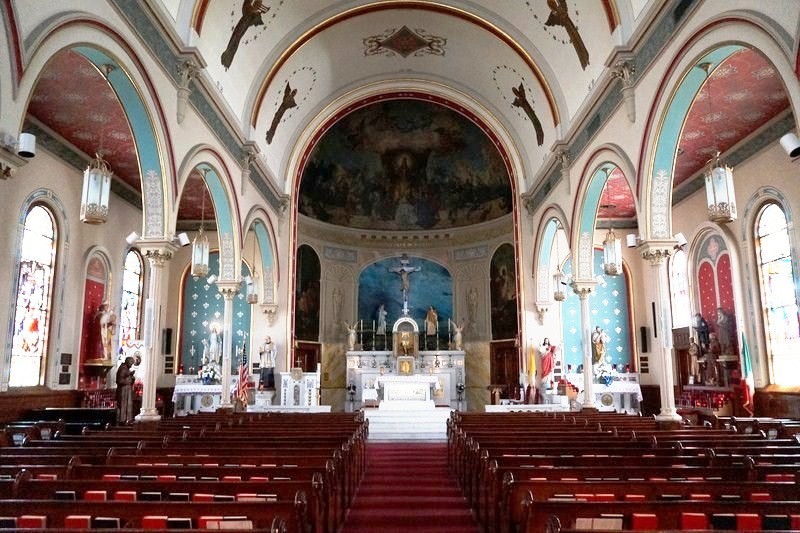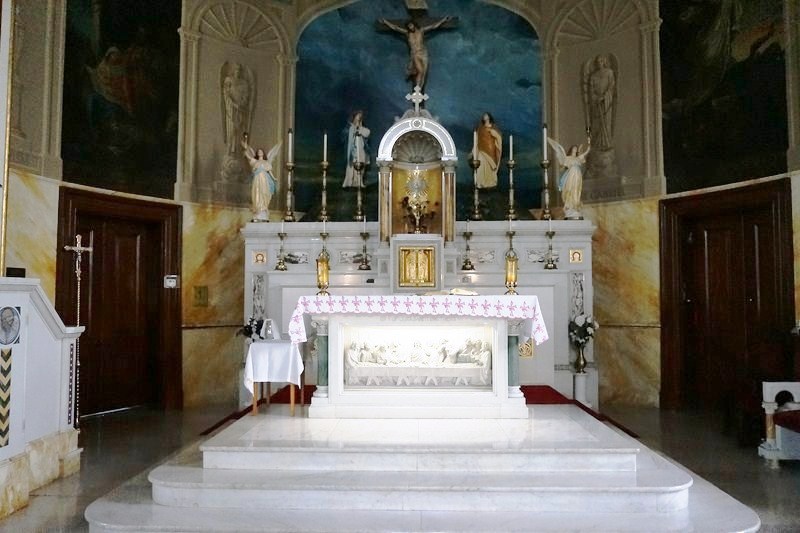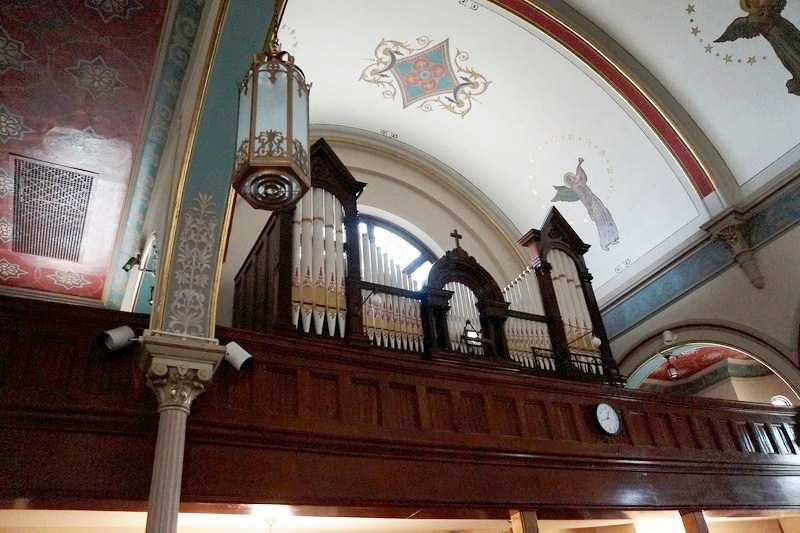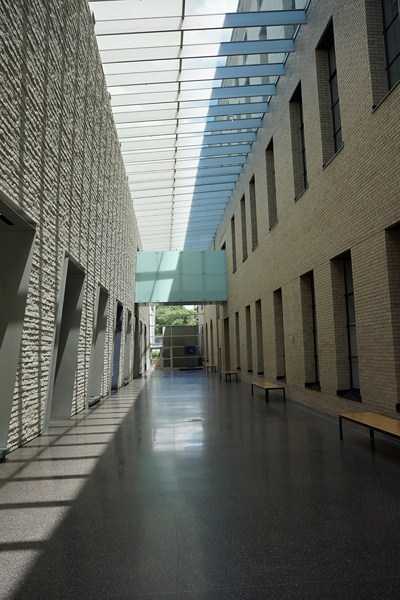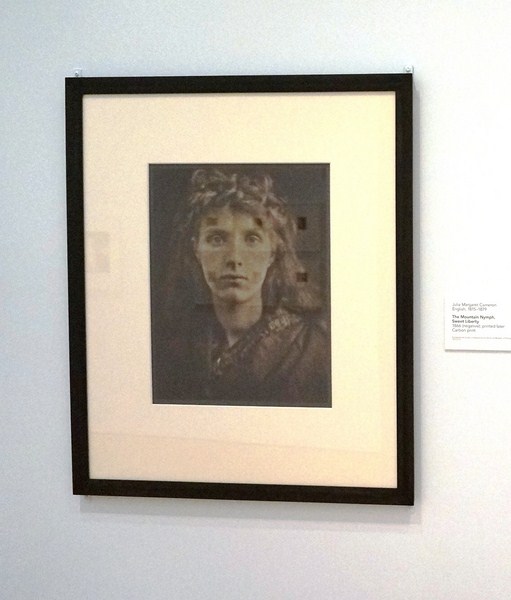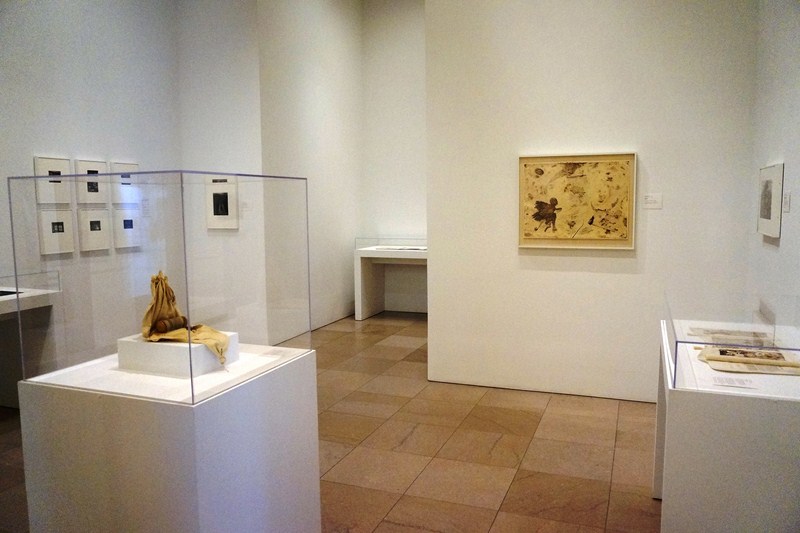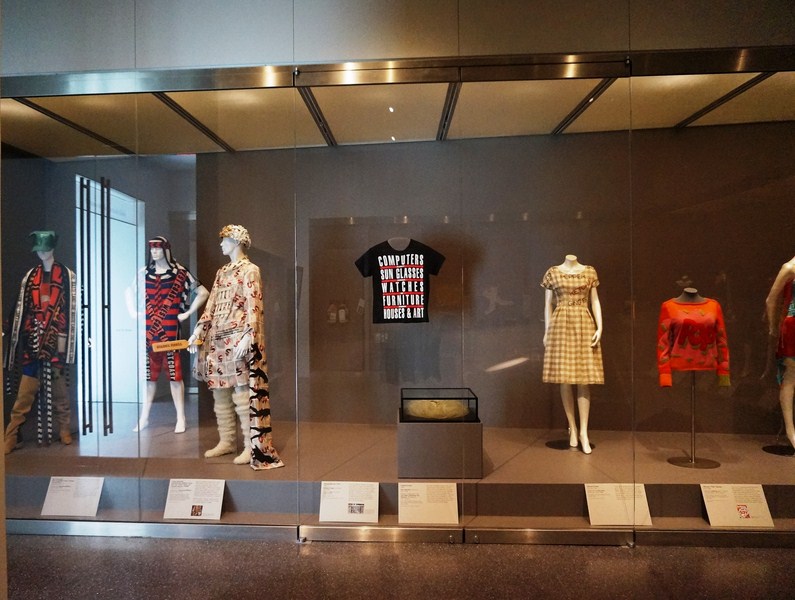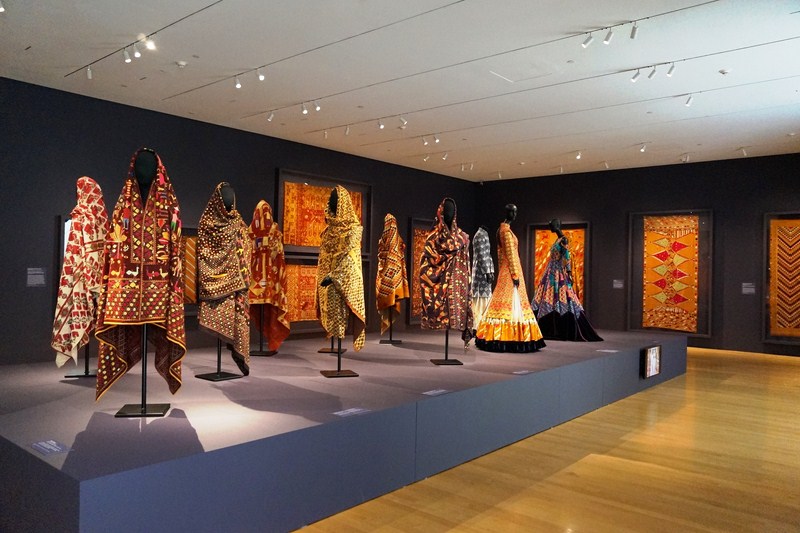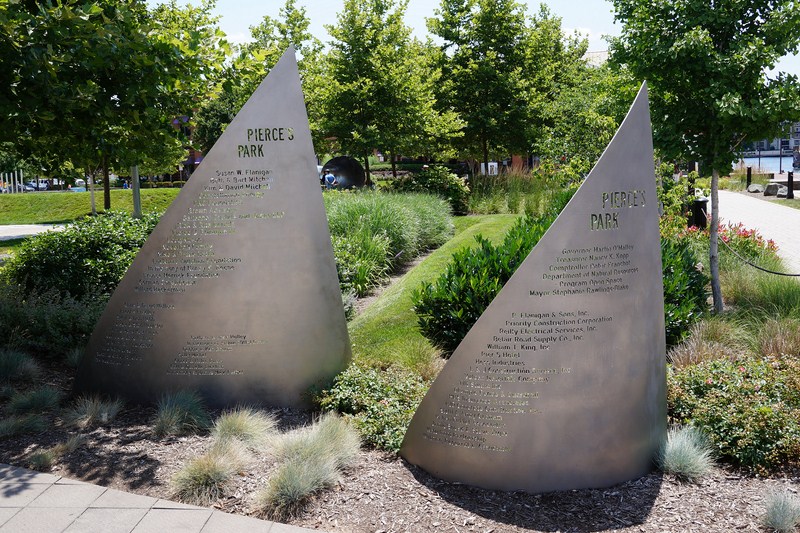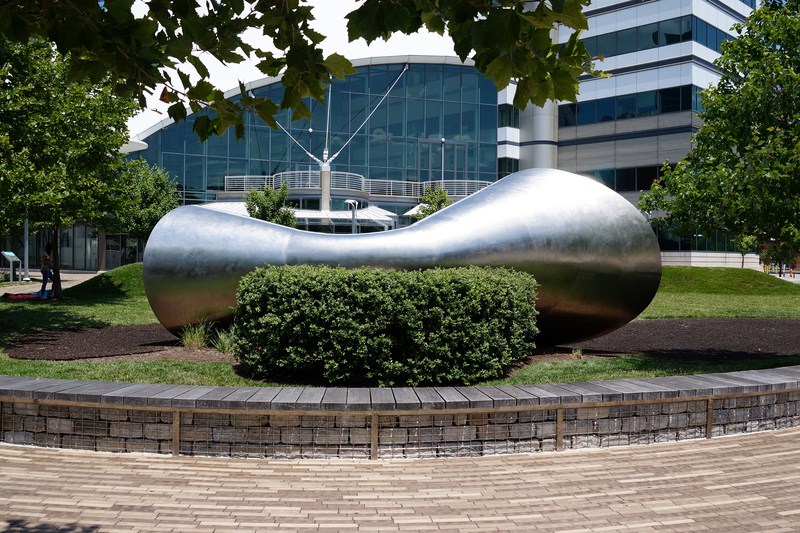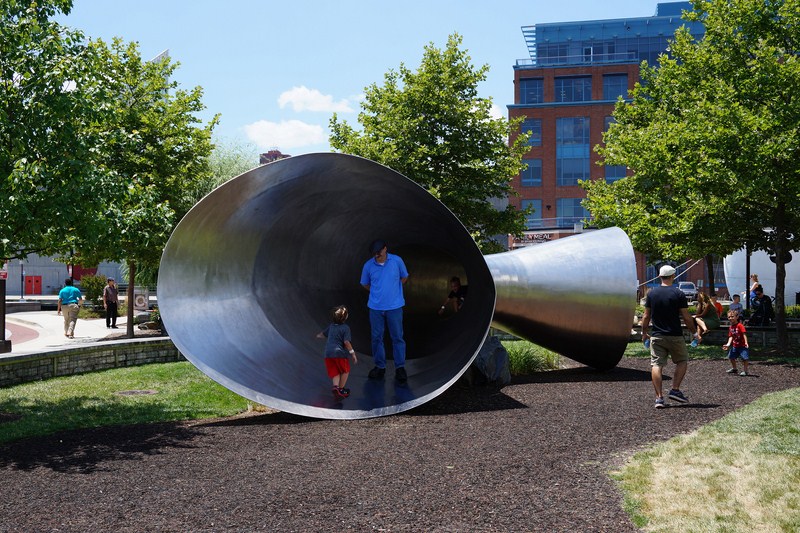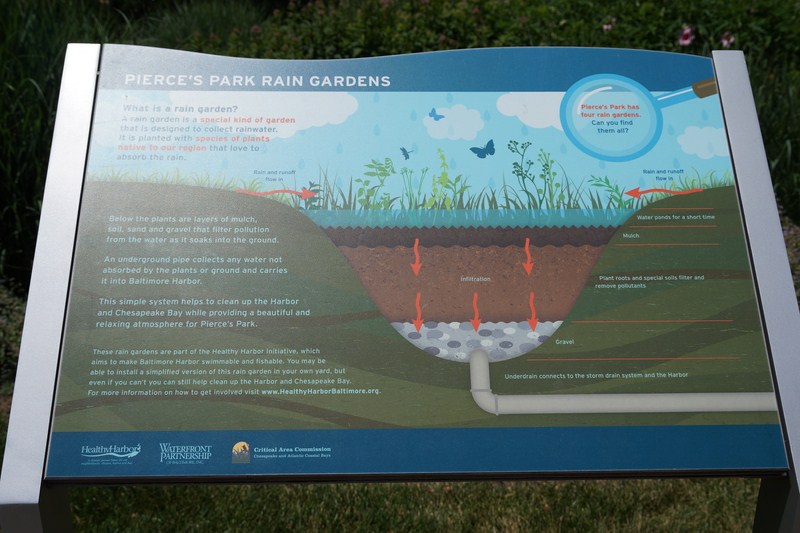This public art museum, founded and opened in 1934, holds collections substantially amassed by major American art and sculpture collector William Thompson Walters, (1819–1894) and his son Henry Walters (1848–1931), who refined the collection and made arrangements for the construction of a later landmark building to rehouse it. The entire collection of then more than 22,000 works was bequeathed by Henry Walters upon his death in 1931.
The collection includes masterworks of ancient Egypt, Greek sculpture, Roman sarcophagi, medieval ivories, illuminated manuscripts, Renaissance bronzes, Old Master European and 19th-century paintings, Chinese ceramics and bronzes, Art Deco jewelry, and ancient Near East, Mesopotamian, or ancient Middle East items.
The elaborate stone palazzo-styled structure, Henry Walters’ original gallery, was designed by architect William Adams Delano and erected between 1904 and 1909. Its exterior was inspired by the Renaissance-revival-style Hôtel Pourtalès in Paris while its interior was modeled after the 17th-century “Collegio dei Gesuiti” (now the Palazzo dell’Università, built by the Balbi family for the Jesuits in Genoa). It houses the arts of the Renaissance and Baroque periods, French decorative arts of the 18th and 19th centuries, manuscripts and rare books.
The Centre Street Annex Building, at the rear of the original main gallery, was designed by the Boston firm of Shepley, Bullfinch, Richardson, and Abbott, in the “Brutalist” poured-concrete style, an extremely modernistic style prevalent in the 1960s. This annex building, opened in 1974, has several horizontal lines paralleled with features in the 1909 structure.
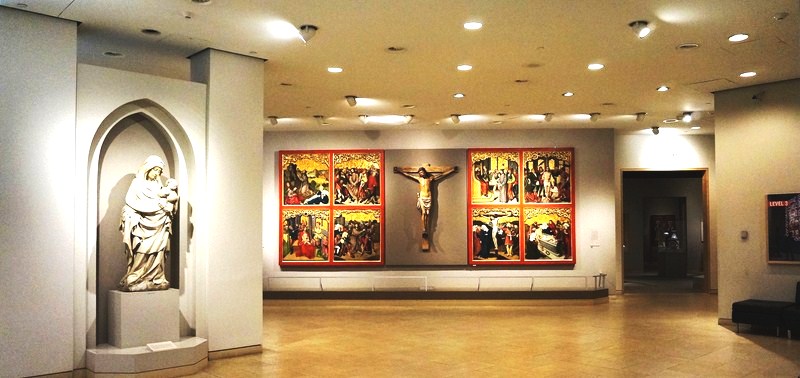
Medieval World lobby. At left is the “Virgin and Child” (Burgundian, ca. 1425) while at center is an altarpiece with the Passion of Christ
From 1998 to 2001, it was substantially altered by Kallmann McKinnell and Wood, Architects. A soaring, four-storey glass atrium was provided, with a suspended staircase at the juncture between the older and newer buildings, and a new entrance lobby along Centre Street. Today, the conjoined buildings has five floors with 39 intimate galleries for smaller works. The collection has also grown, by later gifts and purchases, to 35,000 works.
The new lobby, which provides easier ground-level handicapped access along with enhanced security provisions for both collections and visitors, also has a café, an enlarged museum, gift store and a reference library.
The museum’s famed art conservation laboratory, one of the oldest in the country, is also found here. With its large display walls and irregular corridors and galleries, the Centre Street Annex Building houses the ancient, Byzantine, medieval, Ethiopian, and 19th-century European collections.
Originally called “The Walters Art Gallery,” the museum changed its long-time name to “The Walters Art Museum” in 2000 to reflect its image as a large public institution and eliminate confusion among some of the increasing out-of-state visitors.
In 2001, after a dramatic 3-year physical renovation and replacement of internal utilities and infrastructure, “The Walters” (as it is often known in the city) reopened its original main building.

The Upper Stair Hall. At near left is the “Allegory of Knowledge of Things” while on the right is the Choir Gate (1700-1750)
Starting on October 1, 2006, as a result of substantial grants given by Baltimore City and the surrounding suburban Baltimore County arts agencies and authorities, the museum began having free admission year-round. In 2012, “The Walters” released nearly 20,000 of its own images of its collections (one of the largest and most comprehensive such releases made by any museum), on a Creative Commons license, and collaborated in their upload to the world-wide web and the internet on Wikimedia Commons.

The two monumental 3,000-pound statues of the Egyptian lion-headed fire goddess Sekhmet at the entrance to the Egyptian Art Exhibit
The Walters’ collection of ancient art, one of the largest assemblages in the United States, includes examples from Egypt, Nubia, Greece, Rome, Etruria and the Near East.
The second floor houses The Ancient World (Ancient Treasury, Near Eastern Art, Egyptian Art, Greek Art, Etruscan Art, Roman Art), European Art (Entry Hall of Arms and Armor, Chamber of Wonders, 17th Century Dutch Cabinet Rooms, 18th and 19th Century Treasury) and the Sculpture Court.
The Walters’ collection of ancient art, one of the largest assemblages in the United States, includes examples from Egypt, Nubia, Greece, Rome, Etruria and the Near East.
The collection of ancient Egyptian and Nubian art, dating from prehistoric to Roman Egypt (5th millennium BC– 4th century AD ), include statuary (the most impressive pieces are two monumental 3,000-pound statues of the Egyptian lion-headed fire goddess Sekhmet); stelae; the intact Walters Mummy (still in its elaborate wrappings); reliefs; sarcophagi; funerary objects; impressive jewelry and objects from daily life as well as images of private individuals and kings.
Art from the Near East includes alabaster reliefs from the palace of Ashurnasirpal II.
The Walters’ outstanding collection of ancient Greek art, illustrating the history and culture of Greece from the Cycladic to the Hellenistic period (ca. 3rd millennium–1st century BC), includes engraved gemstones; dazzling gold jewelry (including extraordinary Greek bracelets, encrusted with multicolored gemstones, from Olbia on the shores of the Black Sea); exceptional vases, and marble statues (including the Praxitelean Satyr)
The most treasured objects in the collection of ancient Roman art at the Walters includes a large assemblage of Roman portrait heads (including powerful depictions of the emperors Augustus and Marcus Aurelius); exquisite Etruscan bronzes, a Roman bronze banquet couch, and seven marble sarcophagi, among the finest in the world, with intricate marble carvings depicting mythological scenes, from the tombs of the prominent Licinian and Calpurnian families in Rome.
The 18th and 19th century Treasury displays portrait miniatures, examples of goldsmiths’ works (especially snuffboxes and watches) along with some exceptional 19th- and early-20th-century works. Among them are examples of Art Nouveau-styled jewelry by René Lalique, jeweled objects by the House of Fabergé, including two Russian Imperial Easter eggs, and precious jewels by Tiffany and Co. of New York City.
Three galleries (Entry Hall of Arms and Armor, Chamber of Wonders and Collector’s Private Study), dedicated to European art of the 15th to 17th centuries, suggest a 1600s collection that might have been the pride of a sophisticated nobleman in the Spanish Netherlands (present-day Belgium).
The Entry Hall of Arms and Armor , reflecting traditions of chivalry and the noble values of family honor is, in part, based on the installation at the Habsburg palace Schloss Ambras just outside Innsbruck (Austria).
The Collector’s Private Study is where small, intricate objects were kept close at hand. The more spacious Chamber of Art and Wonders (or Constkamer, as such a space was known in the Spanish Netherlands), is a faithful recreation of a cabinet of curiosity and has cabinets full of natural history specimens, as well as art objects from the museum’s collection.
The third floor houses The Medieval World Galleries (Byzantine, Russian and Ethiopian Icons, Early Byzantine Art, Migration and Early Medieval Art, Medieval World Lobby, Romanesque and Gothic Art, The Great Room, Upper Stair Hall, Islamic Art, Islamic Arms and Armor) and Renaissance & Baroque Galleries (13th-15th Century Italian Art, 15th Century Art of Northern Europe, 15th Century Italian Art, 16th Century Italian Art, 17th Century Art, 18th Century Art, Renaissance Ceramics)
The Walters’ collection contains one of the largest assemblages of art produced during the Middle Ages (extends from the 4th to the end of the 14th century, or from the disintegration of the Roman Empire to the beginning of the Renaissance in western Europe in all the major artistic media of the period).
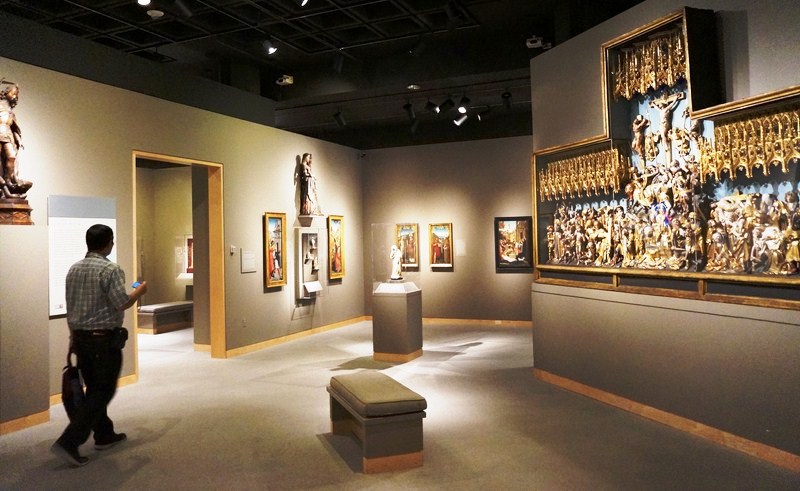
The author (left) entering the “15th Century Art of Northern Europe”exhibit. At right is an altarpiece with the Passion of Christ (ca. 1492-1495, Late Medieval Renaissance).
The Walters’ Medieval collection, for which the museum is best known internationally, is considered one of the best collections of Medieval art in the United States. Spanning the Medieval world from the eastern Mediterranean to Western Europe, the museum’s Medieval art collection features a wide range of remarkable objects including examples of metalwork, sculpture, stained glass, textiles, icons, and other paintings.
The Walters’ collection is especially renowned for its particularly strong holdings of ivories, enamels, liturgical vessels, reliquaries and illuminated manuscripts.
The Walters’ Medieval collection features unique objects such as the Byzantine agate Rubens Vase that belonged to the painter Rubens (accession no. 42.562) and the earliest-surviving image of the Virgin of Tenderness, an ivory carving produced in Egypt in the 6th or 7th century (accession no. 71.297). Sculpted heads from the royal Abbey of St. Denis are rare surviving examples of portal sculptures that are directly connected with the origins of Gothic art in 12th-century France (accession nos. 27.21 and 27.22). An ivory casket covered with scenes of jousting knights is one of about a dozen such objects to survive in the world (accession no. 71.264).
The Walters also displays Late Medieval devotional Italian paintings by painters such as Tommaso da Modena, Pietro Lorenzetti, Andrea di Bartolo (Resurrection), Alberto Sotio, Bartolomeo di Tommaso (Death of Saint Francis), Naddo Ceccarelli, Master of Saint Verdiana, Niccolo di Segna (Saint Lucy), Orcagna, Olivuccio di Ciccarello, Master of Panzano Triptych and Giovanni del Biondo.
Henry Walters took an early interest in Byzantine art, buying at a time when there were limited collectors in this field, and the museum also holds one of the leading collections of Byzantine Art in the United States.
The Walters’ Byzantine art collection, supported by an important collection of Russian and Orthodox icons, includes a group of over two thousand decorative tile fragments, early Byzantine silver, post-Byzantine art, the Kaper Koraon Treasure and illuminated manuscripts. The museum also houses the largest and finest collection of Ethiopian Orthodox Church art outside Ethiopia.
The collection of Renaissance, Baroque and 18th-century European art, the breadth of which offers a comprehensive display of the arts during this artistically fertile period, features one of the most significant holdings of Italian paintings, many of which were acquired by Henry Walters with the Massarenti Collection (a previously unprecedented purchase of the contents of an Italian villa) plus sculpture, furniture, ceramics, metalwork, jewelry, arms and armor, and locks and keys.
The best-known works include Hugo van der Goes‘ Donor with Saint John the Baptist, Heemskerck‘s Panorama with the Abduction of Helen Amidst the Wonders of the Ancient World, Giambattista Pittoni‘s Sacrifice of Polyxena, the Madonna of the Candelabra (from the studio of Raphael), Veronese’s Portrait Of Countess Livia da Porto Thiene and her Daughter Porzia, El Greco‘s Saint Francis Receiving the Stigmata, Bernini‘s “bozzetto” of the Risen Christ, Tiepolo‘s Scipio Africanus Freeing Massiva, and The Ideal City attributed to Fra Carnevale. The museum has one of ten surviving examples of the Sèvres pot-pourri vase in the shape of a ship from the 1750s and 1760s.
The Walters’ collection presents an overview of 19th-century European art, particularly European art works by late-19th-century academic masters and Impressionists from France. Because of his notorious Southern-leanings, William Walters, with his family, stayed in Paris during the Civil War.
Here, he soon developed a keen interest in contemporary European painting and he commissioned, either directly from the artists or purchased at auctions, such major works by the Barbizon masters (Jean-François Millet and Henri Rousseau); academic masters (Jean-Léon Gérôme and Lawrence Alma-Tadema) and modernists (Monet, Manet, Sisley and the Italian Antonio Rotta).
From the first half of the century comes major paintings by Ingres, Géricault, and Delacroix. Highlights of the collection include Odalisque with Slave by Ingres (a second version); Claude Monet’s Springtime; Alfred Sisley‘s panoramic view of the Seine Valley; and The Café Concert, Édouard Manet’s realist masterpiece.
The museum’s collection of Sèvres porcelain (Henry Walters was particularly interested in the courtly arts of 18th-century France) includes a number of pieces that were made for members of the Royal Bourbon Court at Versailles Palace outside of Paris.
Islamic art in all artistic media, encompassing the entire realm of artistic production in those lands where, from the 7th century onward, the Muslim religion took hold (territory that, at its height, stretched from present-day Spain and North Africa westward to India), is represented at the Walters, reflecting the cultural diversity and geographical range of Islamic cultures.
It includes not only objects used in the service of religion but also those created for the courts of the Middle East and Central Asia, as well as articles used in everyday life.
Among the highlights are a 7th-century carved and hammered silver bowl from Iran that demonstrates the continuation of Sassanian traditions in early Muslim Persia; a 13th-century candlestick made of copper, silver, and gold from the Mamluk era in Egypt; 16th-century mausoleum doors decorated with intricate wood carvings in a radiating star pattern; a delicate 17th-century silk sash from the Mughal Empire in India; and a 17th-century Turkish tile with an image of the Masjid al-Haram (“Great Mosque of Mecca”), the center of Islam in Mecca, (modern Saudi Arabia).
The Walters Museum owns an array of Islamic manuscripts that include a 15th-century Koran from northern India (executed at the height of the Timurid Empire); a 16th-century copy of the “Khamsa of Nizami” by Amir Khusraw (illustrated by a number of famous artists for the Emperor Akbar); and a Turkish calligraphy album by Sheikh Hamadullah Al-Amasi (one of the greatest calligraphers of all time).
The ongoing, 18-month, special exhibition “From Rye to Raphael: The Walters Story, spanning the entire fourth floor of the museum, celebrates the museum’s 80th anniversary by examining the legacy of founders William and Henry Walters.
It brings together, in 7 galleries, an extraordinary group of art and artifacts that illustrates the intriguing stories behind the Walters family’s magnificent gift to the city.
The “rye” in the exhibit name refers to the trade in rye whiskey that served as the basis of the family fortune while “Raphael” refers to the “Madonna of the Candelabra” (depicting Mary and Christ as divine royals) painting (not on view in the exhibition) by Renaissance master Raphael, purchased by Henry in 1901, the artist’s first Virgin and Child to enter a United States collection..
Alongside Walters family photographs and historic material culled from the archives, it features 200 works chosen for their beauty and craftsmanship. Much of it comes from the museum’s permanent collection while other previously unseen objects were selected from the museum’s archives.
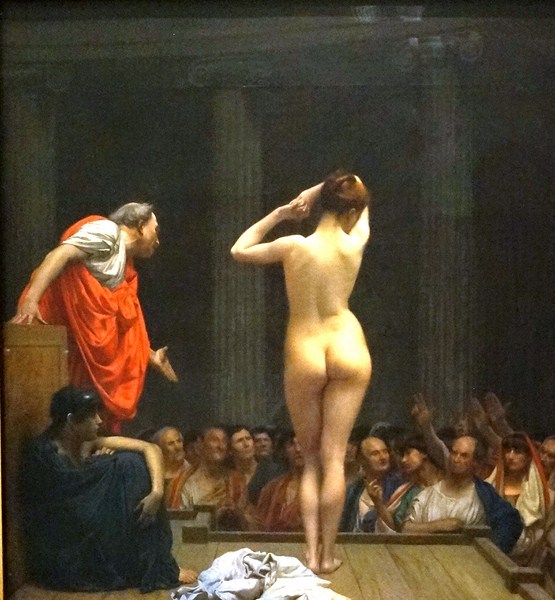
A Roman Slave Market (1884) by Jean Leon Gerome, depicting an eroticized nude female slave, seen from behind standing on a scaffold as men below call out their bids is, perhaps, the most sensuous image in the show but is also easily the most disturbing.
Its highlights include a 19th-century salon-style gallery (re-creating a room in the original Walters residence at 5 West Mount Vernon Place that was crammed floor to ceiling and wall to wall with artworks, gold frames gleaming against plum wallpaper) and a gallery of French works by such painters as Eugene Delacroix, Jean-Jacques Rosseau and Jean-Leon Gerome.
The Walters Art Museum: 600 North Charles Street, Mount Vernon-Belvedere, Baltimore, Maryland 21201, United States. Tel: +1 410-547-9000. Open Wednesdays to Sundays, 10 AM –5 PM (9 PM on Thursdays), closed Mondays, Tuesdays, Martin Luther King Jr. Day, Independence Day, Thanksgiving Day, Christmas Eve, Christmas Day and New Year’s Day. Admission is free. Website: www.thewalters.org.


